
Touropia Travel Experts
Discover the World

Best Time to Visit Venice: Month-by-Month Guide

While it is one of the most beautiful, romantic cities in the world, Venice’s huge crowds and high prices can sometimes make visiting a little less special. What’s going on in the city and its weather also has a massive impact on people’s experience exploring La Serenissima.
As it is a must-see destination for many, Venice is often inundated with visitors – just like its streets and squares in winter when they often flood. While the canals, bridges, churches and palaces always look incredible, there are, of course, quieter, calmer times to visit. Summer now is almost too full with its scorching heat also making walking around uncomfortable.
To help you plan your trip, let’s take a look month-by-month at what to expect in the Queen of the Adriatic in terms of its climate, crowds and cultural events.
What’s the Weather Like in Venice?
Lying in Northeastern Italy in the Veneto region, Venice is built atop 118 islands in a lagoon, adjoining the Adriatic Sea. As it is surrounded by water, it is not uncommon for everywhere to flood for a few hours at high tide during the winter months. This is known as acqua alta.
Apart from this phenomenon, the city sees regular rainfall throughout the year, each month averaging between 9 and 13 days. While its winters are cold, grey and foggy, summers are hot and humid. Temperatures in July and August average around 27 to 28°C (80 to 82°F) with their highs often being unbearable.
With ample sunshine, lots of hours of daylight and warm temperatures, spring and autumn are perhaps more comfortable weatherwise. They are not as good though for sunbathing or swimming at the Lido.
Best months to visit Venice

Although July and August are the most popular months to visit due to the summer holidays, the high heat, humidity and crowds can make exploring the city unpleasant. Its main sights, squares and museums are all packed with hotel rates and airfares being more expensive.
As they are a bit calmer and cheaper but the weather is still good, both spring and autumn are great times to visit. There is still a very vibrant feel about town with numerous festivals also taking place.
Other high points of the year include both Christmastime and carnival. Around these hugely important events, thousands of people pour in, come to celebrate and partake in all the fun festivities.
Venice in January
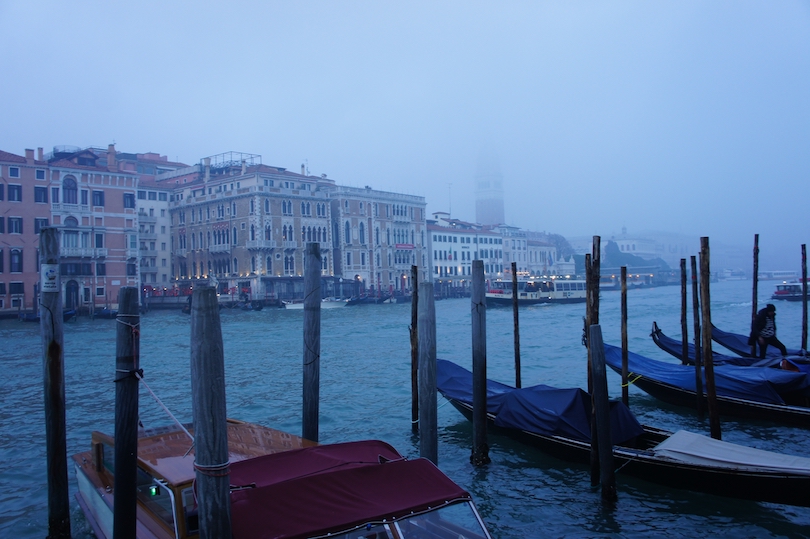
As it lies in between Christmas and carnival and is cold, foggy and grey, January is the least popular month to visit Venice. If you don’t mind the weather, exploring the almost deserted city can be very atmospheric in the gloom. At times, you may have to make your way about raised walkways if the acqua alta floods its lower areas.
Besides benefiting from the cheaper hotel prices, there are no crowds in the alleys or at any of its attractions. Some may have reduced opening hours, however. Aside from a couple of Christmas markets that are still around the first week, there is the Feast of the Epiphany to attend. Bonfires and concerts are held while a rowing regatta races along the Grand Canal.
Venice in February
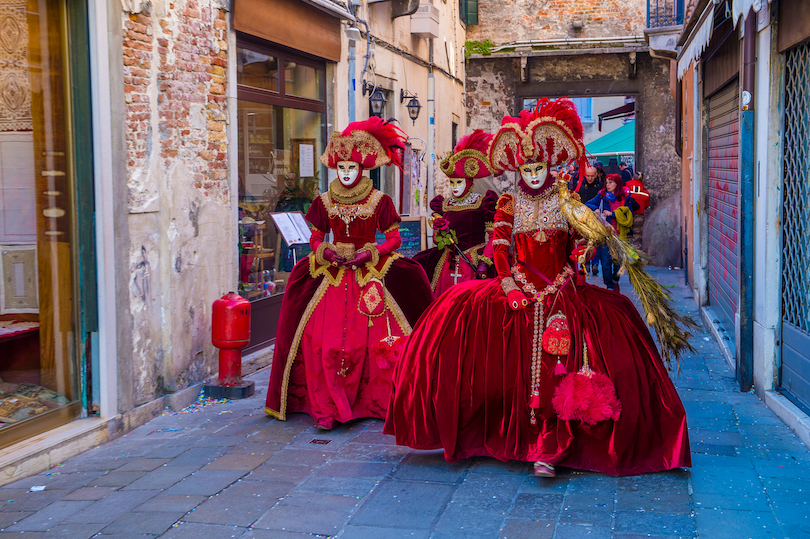
February in Venice is all about one thing: its world-famous carnival. For two weeks, colourful costume-clad partygoers wearing masks amble about the city with opulent balls, boat parades and street fairs all taking place. Prices shoot up around this time as millions of people come to enjoy the unforgettable event.
As temperatures hover around 9°C (48°F), you’ll have to wrap up warm when exploring the Floating City. While it is the driest month, the bora winds create quite a chill, coming off the cold canals. At Campo San Polo, you can even ice skate if you like! Apart from carnival, February is the off-season so there are fewer crowds and prices are cheaper.
Venice in March
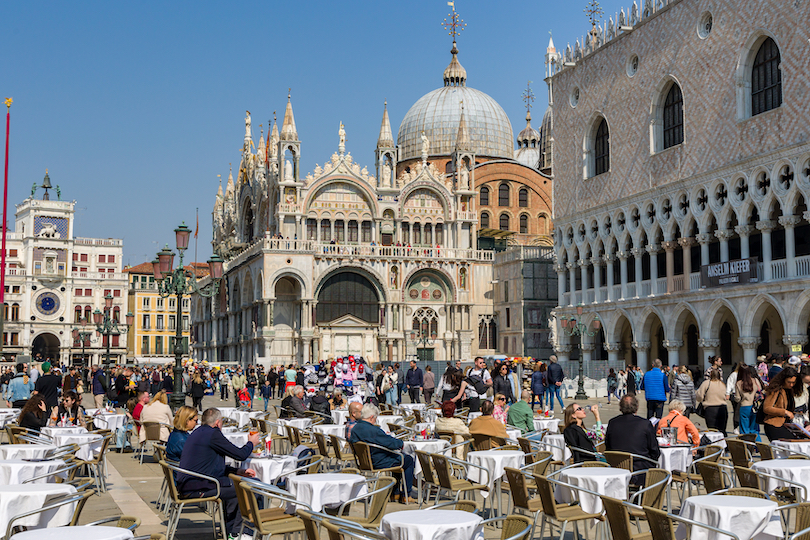
As the weather starts to improve, tourists slowly start to trickle back to Venice. March is the last quiet, more affordable month before the city is overrun at Easter and in summer. With a bit more sunshine and warmth to its days, spring can be a wonderful time to visit. You’ll still need to layer up though with many sights also still closing earlier.
Other than making the most of the shorter lines and relaxed atmosphere, it’s not a bad idea to take trips to popular places like Lake Garda and Verona before they get too busy. You can also hop on a vaporetto to Murano or Burano and enjoy gondola rides about its canals. After this, the region’s boats, trains and city centers are much more crowded.
Venice in April
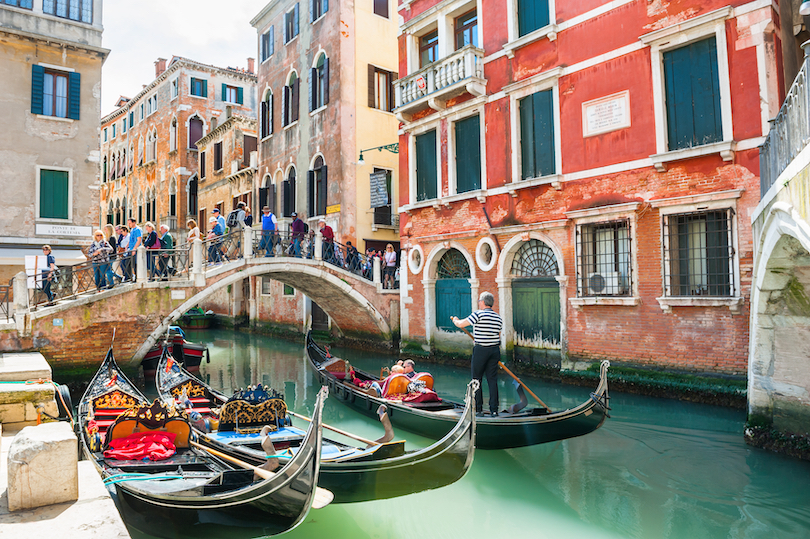
Once the Easter holidays arrive, the peak season starts with the number of tourists in Venice only subsiding in November. Hotel prices and airfares are much higher with queues forming outside its main attractions and museums. While there is an excited buzz about the city, its narrow alleys do start to feel a bit crowded.
Coupled with its longer, sunnier days, averages of 17°C (62°F) are great for strolling about its stunning streets and squares. Parades and concerts take place for the Feast of San Marco while its prestigious Art Biennale also begins, carrying on til the end of November. Although it is a bit wetter than the winter months, its 12 days of rain shouldn’t put much of a damper on your trip.
Venice in May
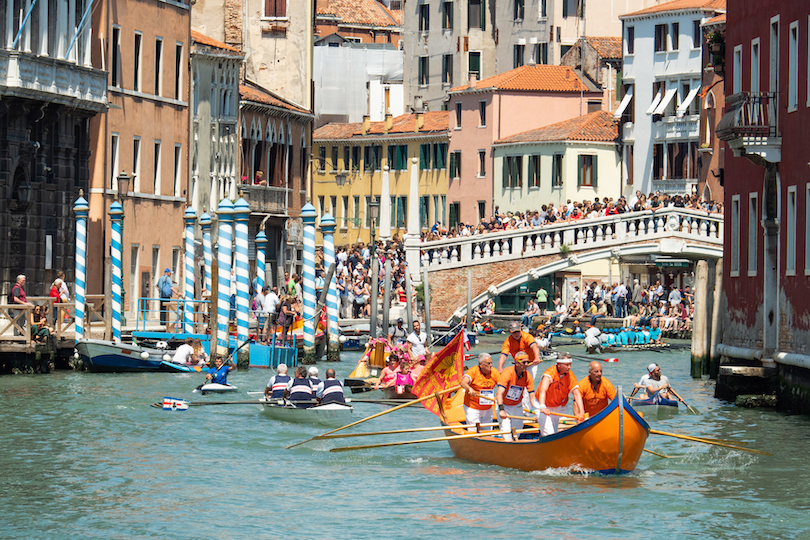
Along with April, May is one of the best months weatherwise to visit Venice. Temperatures of around 21°C (70°F) are perfect for wandering about the city before the summer heat kicks in. This is also a good time to explore some other islands and cities in Veneto before they’re completely overwhelmed.
While many museums, shops and restaurants shut for Labour Day, there are some exciting regattas to watch later on in the month. These are for both the Vogalonga – a long-running competition – and the Feast of the Ascension. Although there are loads of crowds around, prices are still more affordable than in summer.
Venice in June
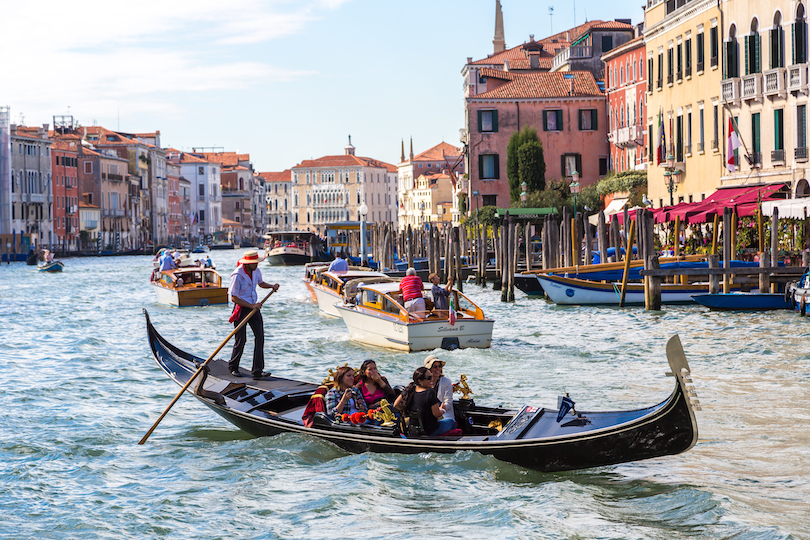
With average temperatures rising to 25°C (77°F), Venice starts to feel a bit hot and stuffy, especially with the hordes of tourists thronging about its streets. The weather is finally good enough though to sunbathe and swim at the Lido. Other than all its Art Biennale exhibitions, June is the last month to catch an opera at La Fenice Theatre before the summer break.
As each day has around 16 hours of light, there is ample time in which to sightsee or sit and sip a spritz at its outdoor cafes. June is one of the rainiest months though, along with August and November. While prices are more expensive, concerts, dances and exhibitions also take place for the Feast of St. John in Bragora and Feast of San Pietro de Castro.
Venice in July
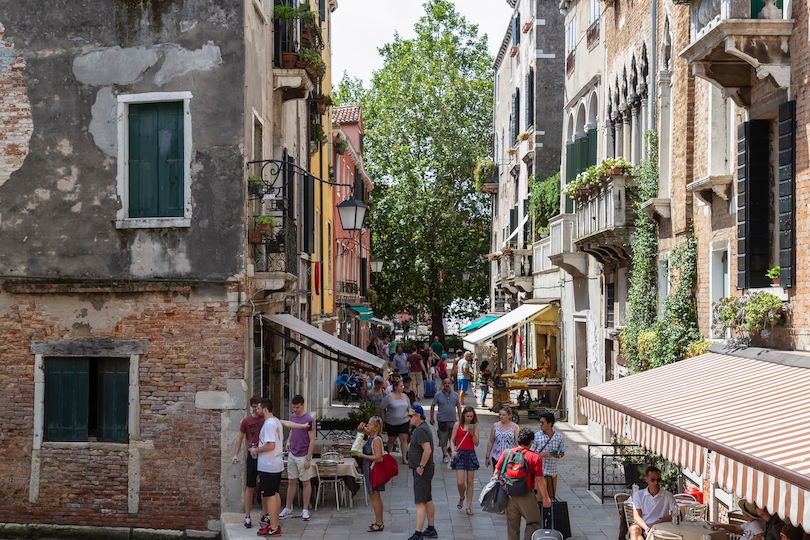
July and August are the absolute peak season in Venice when everywhere is packed and all its shops, restaurants and bars are at their busiest. You’ll have to queue at many of its main attractions and museums with the vaporetti to Murano and Burano also being full. To avoid the astronomical accommodation prices, it’s worth having a look for hotels in nearby Mestre.
The hottest and sunniest month of the year, July’s high averages of 28°C (82°F) are actually rather unpleasant. While wandering about is a hot and sticky affair, it’s the perfect weather to lounge on the beach at either the Lido or Jesolo. The city has a lovely, lively atmosphere about it with regattas and firework displays also being held for the Feast of the Redeemer.
Venice in August
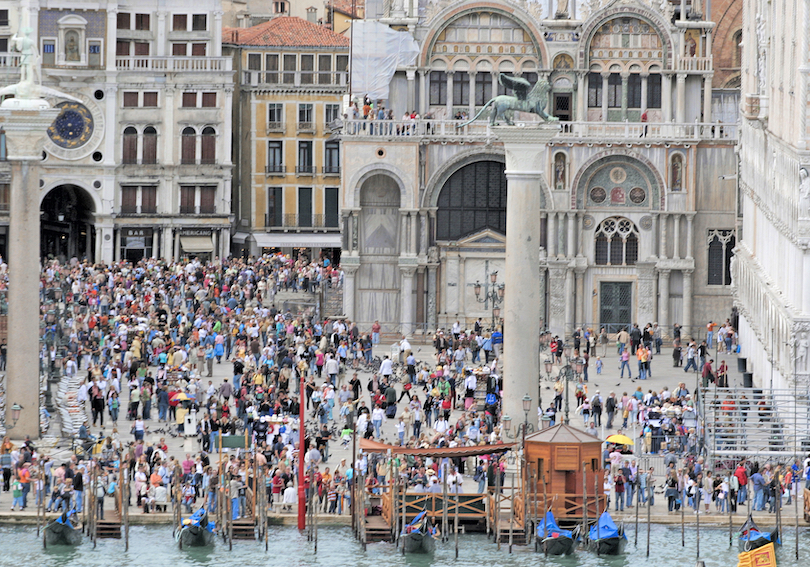
While many Italians take their holidays in August, business continues as usual in Venice with most shops and restaurants remaining open. The Rialto Bridge and streets near Piazza San Marco are absolutely rammed. To escape the crowds, consider heading to less popular areas like Dorsoduro and Cannaregio.
The sweltering weather and slow-moving throngs of tourists can make sightseeing tiring and a bit frustrating. You can always cool off though at the beach or in one of its countless quiet churches. Besides the Festival of Santo Stefano’s sports competitions and dance shows, the world-renowned Venice International Film Festival starts, continuing into September.
Venice in September
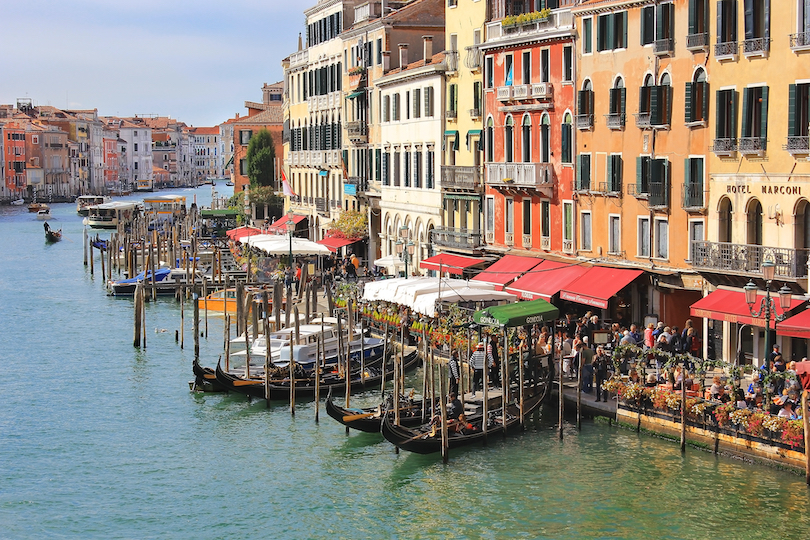
Once the school holidays are over, things are finally a bit quieter, calmer and cheaper in the city – that’s not saying much though! Prices remain high and massive groups of tourists still mill about its streets. As it is a few degrees cooler, ambling around is more comfortable with the days being dry and sunny.
Aside from the International Film Festival at the Lido, there is the fascinating Regata Storica and all its historic boats to watch along the Grand Canal. The opera season also opens again at La Fenice Theatre. As the weather is still warm, you can always sunbathe and swim at its beaches. Most nearby day trip destinations will still be quite busy though.
Venice in October
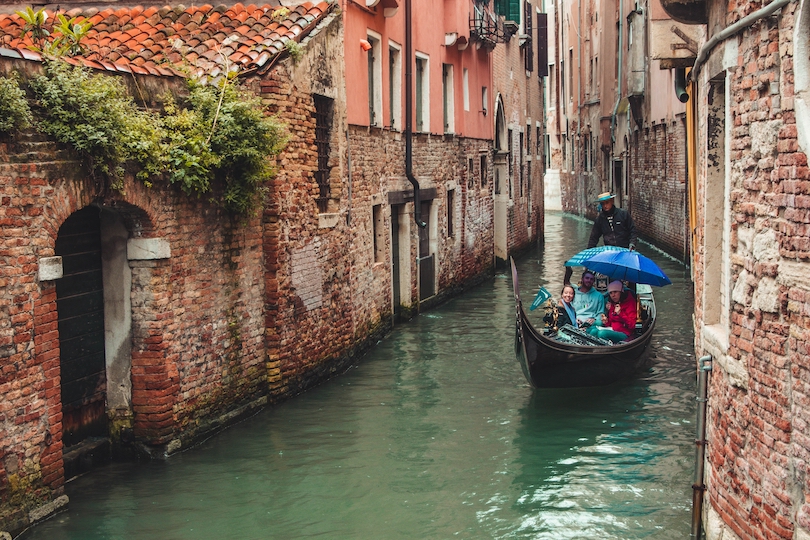
As October has fewer big events going on, accommodation is finally a bit more affordable with the city being much quieter the further you stray from Piazza San Marco. For the most part, the weather is quite warm and dry, though the days are shorter. Its 5 hours of sunshine and averages of 18°C (64°F) are still lovely for sightseeing but a bit too cool for the beach.
Before things turn cold, wet and grey in November, it’s worth taking trips to historical cities like Padua, Vicenza and Verona. You also no longer have to fight for space on its vaporetti to Murano and Burano. At the end of October, thousands visit for its marathon which passes by its scenic canals over little old bridges.
Venice in November
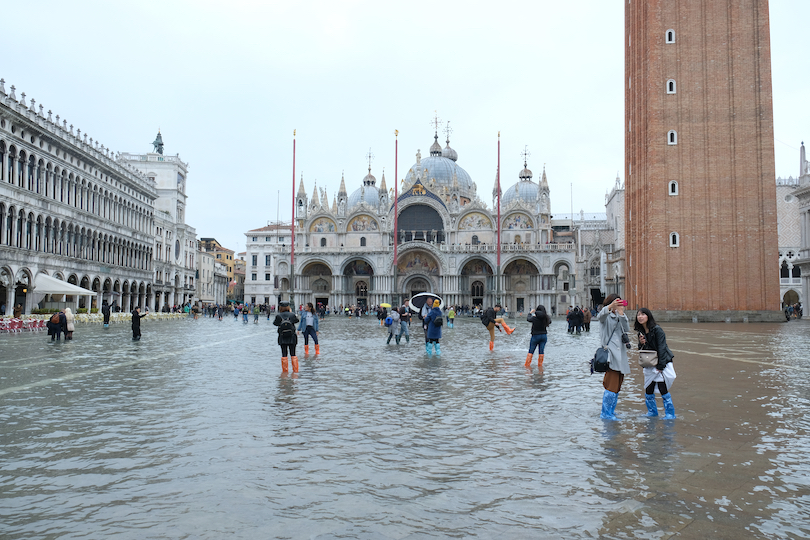
With just 3 hours of sunshine, much more rain and temperatures of 12°C (53°F), November is well and truly the off-season in Venice. Blissfully crowd-free, its reduced hotel prices and airfares can make a trip tempting. You’ll have to pack an umbrella though and listen out for sirens signalling acqua alta’s impending arrival!
While many of its attractions have reduced opening hours and there are fewer daylight hours in which to explore, Venice looks incredible at any time of year. Traditional events such as its Feast of St. Martin and Feast of Our Lady of Health also take place. At these, you can watch religious parades and sample local delicacies. Its Art Biennale also finally comes to a close in November for the winter.
Venice in December
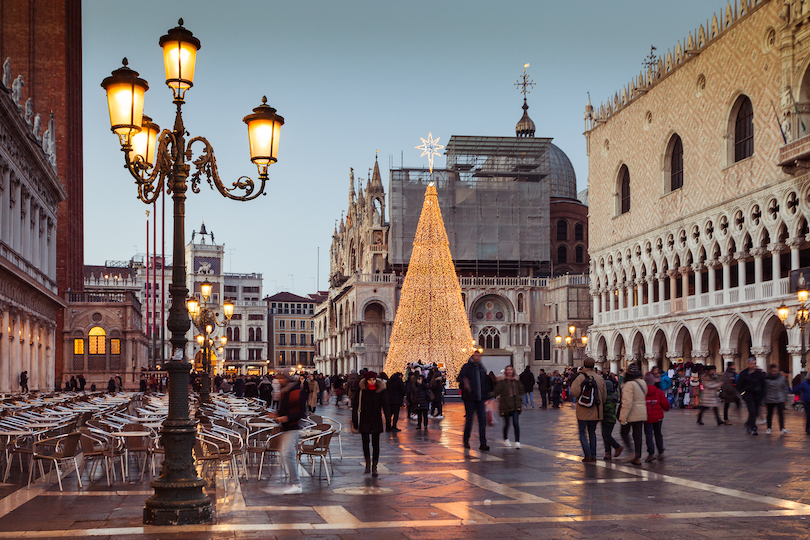
A bit drier and colder than November, Venice has a wonderful, relaxed feel to it in December with the Christmas holidays also bringing some festive cheer. While the chance of fog, wind and acqua alta is higher, exploring its deserted alleys is still magical if you wrap up warm.
Still very quiet in comparison with the spring, summer and autumn months, it sees a spike in visitors around Christmastime. Hotel prices of course rise around the holidays. Other than perusing its cozy markets, you can shoot about the ice rink at Campo San Polo. To welcome in the New Year, you can enjoy concerts and firework displays in Piazza San Marco or attend a special performance at La Fenice Theatre.
Share this post:
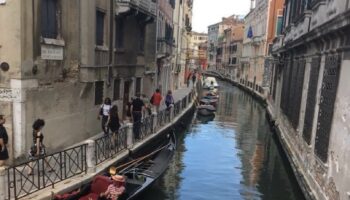
Visiting Chioggia: Little Venice’s Best Kept Secrets
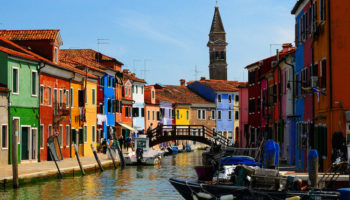
11 Best Day Trips from Venice
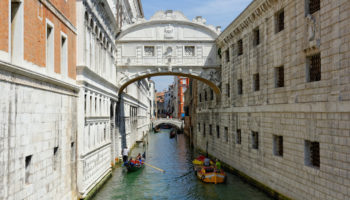
25 Top Tourist Attractions in Venice
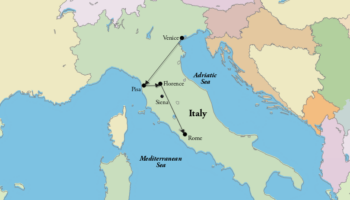
How To Spend One Week in Italy: DIY Itinerary
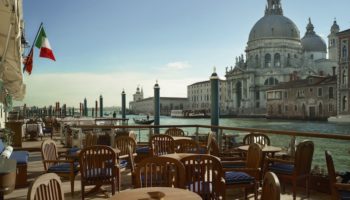
Where to Stay in Venice: Best Areas & Hotels
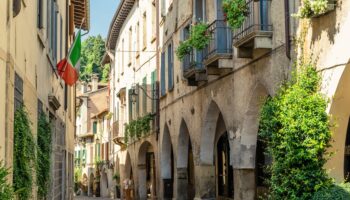
14 Best Places to Visit in Veneto, Italy
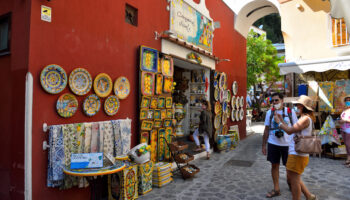
14 Best Things to do in Positano, Italy
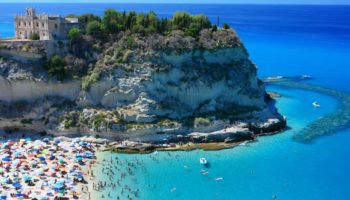
10 Best Beaches in Italy
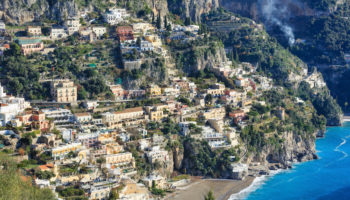
9 Best Day Trips from Naples
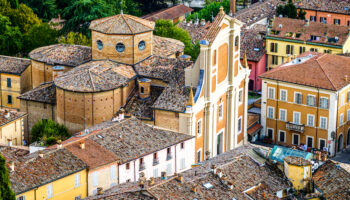
12 Best Places to Visit in Emilia-Romagna, Italy
Reader interactions, leave a reply cancel reply.
Your email address will not be published. Required fields are marked *
This site uses Akismet to reduce spam. Learn how your comment data is processed .

Venice Revealed

The Best Time to Visit Venice: The Ultimate All-Season Guide
This post may contain affiliate links. This means that if you book a tour or hotel through my link I earn a small commission at no additional cost to you. By supporting me through these links, you’re helping me keep this site awesome and deliver top-notch content to you. Your support means the world to me, and I’m incredibly grateful for it!
To truly appreciate Venice’s romantic allure , it’s crucial to plan your visit carefully. I live very close to Venice and spend time there frequently meaning that I have been there in every season.
What’s the best time to visit Venice? My favorite times to go there are in April and May and then again in September and October.
However, the best time to visit Venice can vary greatly depending on your preferences. Some prefer the bustling energy of the peak season, while others seek the tranquility of fewer crowds. Factors such as weather, hotel rates, and key events also play a significant role in determining the ideal time for your visit.
In this comprehensive guide, I’ll delve into the nuances of Venice’s seasons, discuss the city’s weather patterns, highlight key events and attractions, and provide practical tips to help you plan your visit.
Want to know the worst time to visit Venice? Click here for my full article!
Understanding Venice’s Seasons
Venice, like much of Italy, experiences four distinct seasons, each with its unique characteristics and charm. Understanding these seasons and their implications for travel can greatly enhance your visit to this enchanting city.
Peak Season
The peak season in Venice typically falls in the summer months, from June to August. During this time, the city is teeming with tourists from around the world, drawn by the warm weather and the vibrant atmosphere.
The city is in full swing, with all attractions open and tons of events taking place. However, be prepared for large crowds , long lines, and packed vaporetti, especially in popular spots like Piazza San Marco and the Grand Canal. Also, hotel rates tend to be at their highest during this period and some people complain that it’s smelly in the summer.
You’re not too far from some gorgeous beaches , though, so if you have some extra time to spend in Venice then it’s worth it to come during this season.
The off-season in Venice is generally during the colder months, from November to February, excluding the festive Christmas period and the famous Carnevale in February . Aside from during those times, the city sees fewer tourists, resulting in smaller crowds and shorter lines at attractions.
The weather can be quite cold, and some attractions may have shorter hours or be closed entirely. However, hotel rates are generally cheaper, and you can experience a quieter, more authentic Venice.
There is still plenty of events and things to do in the off season. For instance, in January you can take in the Epiphany celebrations.
Shoulder Season
The shoulder season in Venice occurs in the spring (April to June) and fall (September and October). These periods offer a balance between the bustling energy of the peak season and the tranquility of the off season. The weather is generally pleasant, and while there are still tourists, the crowds are less overwhelming.
Hotel rates are also more moderate compared to the peak season. The shoulder season can be an excellent time to visit Venice if you’re looking for a balance between good weather, manageable crowds, and reasonable prices.
Read my guide on the most romantic hotels once you’ve started planning your trip!
Peak Visitor Numbers and Tourist Seasons in Venice

Venice, the city of canals, is a popular tourist destination that attracts millions of visitors each year . Understanding the peak visitor numbers and tourist seasons in Venice can help you plan your trip more effectively, ensuring you get the most out of your visit.
Venice experiences its highest tourist influx during the summer months, particularly in July and August. This is considered the “peak season” when the city is bustling with tourists from around the world. The weather is warm, and all attractions are open, making it an ideal time for sightseeing. However, it’s also when Venice is most crowded, and hotel rates are at their highest.
On the other hand, the “off season” typically falls in the colder months, from late fall to early spring. During this time, the number of tourists drops significantly. While some attractions may have shorter hours, you’ll enjoy fewer crowds, and accommodations are generally cheaper.
The “ shoulder season ” falls in the transitional periods between the peak and off seasons, usually in late spring (April to June) and early fall (September and October). During these months, the weather is still pleasant, and the tourist crowds are less overwhelming than in the peak season.
However, it’s important to note that these are general trends and can vary from year to year.
Weather in Venice
Venice, the city of canals, is a marvel to behold in any season. However, the weather can significantly impact your visit, so it’s essential to know what to expect.
Average Temperatures
Venice experiences a humid subtropical climate, with cool winters and very warm summers. The average annual temperature is 18℃. The warmest month of the year is July, with an average temperature of 28℃. On the other hand, January is usually the coldest month, with an average temperature of 7℃.
Here’s a month-by-month breakdown of the average temperatures:
- January: 7℃
- February: 9℃
- August: 28℃
- September: 24℃
- October: 19℃
- November: 13℃
- December: 9℃

Precipitation
Venice also sees a fair amount of rainfall throughout the year. The months with the largest precipitation are October, November, and May, with October seeing the highest average precipitation of 88mm.
Here’s a month-by-month breakdown of the average precipitation:
- January: 49mm
- February: 51mm
- March: 61mm
- April: 73mm
- August: 62mm
- September: 68mm
- October: 88mm
- November: 84mm
- December: 62mm

Visiting Venice in Different Seasons
Each season in Venice offers a unique experience, with its own set of pros and cons. Here’s a breakdown of what you can expect when visiting Venice in different seasons:
Summer (June – August)
- Long, sunny days perfect for sightseeing
- Numerous events and festivals, such as the Festa del Redentore in July
- Gondola rides and alfresco dining are particularly enjoyable in the warm weather
- High tourist season, resulting in large crowds and long lines at attractions
- High temperatures and occasional summer thunderstorms can be uncomfortable
- Hotel rates are at their peak
Fall (September – November)
- Fewer tourists, resulting in a more relaxed atmosphere
- The weather is generally pleasant, with temperatures dropping from the summer highs
- The occurrence of “acqua alta” can be an interesting experience (though it’s best to come prepared with rain boots)
- Some attractions may have shorter hours
- The weather can be unpredictable, with a higher chance of rain and acqua alta
Winter (December – February)
- The least crowded time to visit Venice
- Lower hotel rates
- Unique events like the Venice Carnival in February
- Cold winters, with temperatures often dropping below freezing
- Shorter days mean less daylight for sightseeing
- Some businesses may be closed or have reduced hours
Spring (March – May)
- Beautiful blooming flowers and pleasant weather
- Fewer crowds compared to the summer months
- The Venice Biennale starts in late May, a major contemporary art exhibition
- Spring showers are common, so it’s a good idea to carry an umbrella
- Some popular sites can start to get crowded, especially during the Easter holidays
Remember, the best time to visit Venice depends on your personal preferences and what you want to get out of your trip.
Key Events and Holidays in Venice
Venice is a city that’s rich in culture and tradition, and this is reflected in the numerous events and holidays that take place throughout the year. These events can significantly impact your visit, affecting everything from hotel rates to tourist crowds.
National Holidays in Italy
Italy celebrates several national holidays, many of which are also celebrated in Venice. These include New Year’s Day (January 1), Easter Monday (date varies), Labor Day (May 1), and Christmas Day (December 25). During these holidays, many businesses and attractions may be closed, but the city often comes alive with special events and celebrations.
Specific Events
One of the most significant events that impact the city’s crowd levels is the Carnevale di Venezia, or the Carnival of Venice. This annual festival is world-renowned and attracts visitors from all corners of the globe. The Carnevale typically takes place in February , leading up to Lent. The exact dates vary each year, but in 2023, for example, many of the Carnival events were scheduled from the 11th to the 21st of February, according to the official Venice Carnival website .
If you’re planning to visit during the Carnevale, it’s recommended to book your accommodation and tickets for events well in advance. Some of the most popular events, like the ‘Il Ballo del Doge’ or the Doge’s Ball, can sell out quickly.
Another significant event is the Festa del Redentore in July, a grand festival with fireworks and a regatta to celebrate the end of the plague in 1576.
Holy Week , leading up to Easter, is also a special time in Venice, with religious processions and services taking place throughout the city.
Christmas in Venice is a magical time, with festive decorations, special church services, and Christmas markets. The markets start popping up around the end of November and often last until into the second week of January.

Another notable event is the Vogalonga Regatta, a non-competitive rowing event that takes place in May. It’s a spectacular sight, with hundreds of boats from around the world participating.
Impact on Hotel Rates and Tourist Crowds
During these events and holidays, Venice can become particularly crowded, and hotel rates often increase due to the high demand. It’s advisable to book your accommodations well in advance if you plan to visit during these times.
For events like the Vogalonga, transportation and even the routes the gondolas can take are impacted. The Grand Canal is closed to public transportation during the Vogalonga for most of the day, for example.
Practical Tips for Visiting Venice
Visiting Venice can be an unforgettable experience, but it requires some planning and preparation. Here are some practical tips to help you make the most of your trip:
Weather Preparedness

Venice’s weather can be quite variable, so it’s important to plan for good weather and prepare for the possibility of bad weather. Check the average temperatures and rainfall for the time of your visit and pack accordingly. Remember, even in the summer, thunderstorms can occur, and in the winter, the city can experience cold temperatures and high water levels (acqua alta). Always have a plan B for outdoor activities in case of unexpected weather changes.
Venice can be an expensive city, especially during the peak tourist season. If you’re on a tight budget , consider visiting in the off-season when hotel rates are generally cheaper. Also, keep in mind that many attractions charge admission fees, so factor these into your budget as well.
Buying one of the many passes available for things like transportation, museums , and other attractions can save you money and time. I highly recommend one and you can see the ones that should help you on your trip by clicking here.
Check out my guide on the most popular Venice Passes so you can find one that suits your needs best!
Packing Appropriately
Packing appropriately for your trip to Venice is crucial. In addition to clothing suitable for the weather, consider packing items like rain boots and a waterproof jacket, especially if you’re visiting during the acqua alta season . If you are caught by surprise by aqua alta and didn’t pack appropriately, don’t worry as many souvenir shops sell boots.
Comfortable walking shoes are a must as you’ll likely spend a lot of time on your feet exploring the city.
Check out my packing list guide for what to wear in Venice!
Day Trips and Special Events
Venice’s location in northern Italy makes it a great base for day trips to other cities and regions such as the Prosecco hills for a wine tour . Consider adding a day trip to your itinerary to explore more of Italy. Also, if you’re visiting over New Year’s Eve, you’re in for a treat. Venice hosts a spectacular fireworks display over the lagoon to ring in the new year, a truly magical experience.

Check out my article on the best day trips from Venice to help you plan your ideal trip!
Venice, with its unique charm and rich history, is a city that captivates every visitor. Whether you’re navigating the bustling streets during the peak tourist season, experiencing the festive atmosphere of the Carnevale, or enjoying the quieter charm of the off-season, Venice promises an unforgettable experience.
Remember, the best time to visit Venice is the time that suits you best. So, plan your trip, pack your bags, and get ready to fall in love with La Serenissima, the most serene city.
- Recent Posts
- The 12 Best Beaches Near Venice: A Comprehensive Guide - March 5, 2024
- [Day Trip] 12 Fun & Quirky Things to Do in Burano, Italy - March 4, 2024
- Dorsoduro Restaurants: Venice’s Best Kept Culinary Secrets - March 2, 2024
Similar Posts
Foodie’s Guide on What to Eat in Venice: Must Try Food
As a foodie living just an hour away from Venice, I’m passionate about exploring the traditional foods in this city’s incredible food scene. But let’s face it, with so many restaurants catering to tourists, it’s easy to end up in a subpar tourist trap that’s overpriced and far from the authentic Venetian food the city…

How to Get from Marco Polo Airport to Venice: All the Options
Venice is a city like no other, with its winding canals, historic buildings, and unique way of life. But before you can start exploring, you need to know how to get from Marco Polo Airport to Venice. This might seem daunting at first, especially if it’s your first visit. But fear not! There are several…
![when to visit venice italy [2024] Is Venice Safe for Tourists? 6 Safety Tips You Need to Know](https://venicerevealed.com/wp-content/uploads/2023/04/is-venice-safe-768x256.png)
[2024] Is Venice Safe for Tourists? 6 Safety Tips You Need to Know
Venice, Italy is a beloved romantic destination for tourists from all over the world. With its picturesque canals, stunning architecture, and rich history, it’s no wonder why so many flock to this city each year. However, some of you may be wondering, is Venice safe to visit? After all, if you’re going somewhere you’ve never…

Venice with Kids: Your Ultimate Guide to Family Fun
Are you planning a trip to Venice with kids? You might be wondering if this enchanting city, known for its winding canals and historic charm, can also be a kid-friendly destination. Well, I’m here to tell you that it absolutely can be! I’m a father of two kids, 9 and 11. We live an hour…

Venice or Rome: The Ultimate Guide for Your Italian Adventure
Living just an hour away from the enchanting City of Canals, Venice, I’ve had the privilege of immersing myself in its unique charm and allure over the years. I’ve also been fortunate enough to visit Rome, the Eternal City, more than a dozen times. Both cities, rich in history, culture, and mouth-watering Italian cuisine, offer…

The Ultimate Insider’s Guide for a Gondola Ride in Venice
If you’re anything like me, the first image that pops into your head when you think of Venice is a sleek, black gondola gliding through serene canals, under ornate bridges, and past centuries-old buildings. It’s the quintessential Venetian experience, isn’t it? I’ve been living near this magical city for years now, and let me tell…
Leave a Reply Cancel reply
Your email address will not be published. Required fields are marked *
Save my name, email, and website in this browser for the next time I comment.
Weather & Climate
Marco Polo Airport Guide
Neighborhoods to Know
Venice's Vaporetto Transportation
Best Gondola Rides
Day Trips From Venice
Top Things to Do
Free Things to Do
Traveling With Kids
Best Museums to Visit
Guide to Carnevale
Top Venice Restaurants
Nightlife in Venice
Best Time to Visit
The Best Time to Visit Venice
Lara D'Agostino / TripSavvy
If you're planning a trip to Venice, some times of year are definitely better than others. Weather, festivals, and, of course, the acqua alta (high water) that Venice is so famous for should all be considered when deciding when to go to Venice.
Taking all of that into account, the best time to visit Venice is November. If you want to have the city to yourself, it's best to visit in the off-season and while you may need to pack some layers for November's chilly evenings, the city is mostly tourist-free and hotel rates are much more affordable. While high water can definitely hamper your sightseeing, know that it has been a way of life for Venetians for hundreds of years and is a unique experience to have as a tourist.
The Weather in Venice
Late spring and early summer in Venice do offer the best weather. But the city during these beautiful warm days is packed with tourists (the May 1 holiday is particularly crowded), meaning that there can be long waits to enter museums and sights. Also during this peak time, finding accommodations—budget or otherwise—can be a challenge.
Venice is similarly packed with tourists in late summer, even though the city can be oppressively hot, the canals ripe with odor, and the inevitable mosquitoes are bothersome.
The fall is a lovely time to visit Venice, but it is also when the acqua alta (flooding, or literally "high water") is more likely to occur. October through January is the typical high water season, though flooding can occur at any time during the year.
Venice's location, in northern Italy on the Adriatic Sea, means that the city has colder, longer winters. While winter can be a great time of year to visit, especially in terms of getting a bargain and avoiding crowds, it can be harsh. The winds that whip off the Adriatic and down the alleyways are bone-chilling. Luckily, winter ends on a lively note with Carnevale , or Carnival, Venice's biggest festival.
Peak Season in Venice
Venice's very busy season occurs in the summer when hotels are charging their maximum rates and tourists are packed into gondolas on the canals. Days are sunny and long, but Venice's inland location means that it can be quite hot.
Key Events and Festivals
Venice has several big events that are worth booking a trip around. Carnevale dates usually fall in late February or early March, when tons of tourists descend on Venice for two weeks of masked and costumed revelry. Easter is also a festive time and is the start to the high season in Venice.
Every other year, in odd-numbered years, Venice hosts the Biennale for Art . This international arts showcase is a world-renowned event and takes place from the end of May to the end of November. The Biennale is a very popular event, so be prepared to find Venice more booked up than usual when it is on.
Yet another summer festival to see in Venice is the Festa del Redentore, which occurs the third weekend in July. This religious festival takes place at the Church of the Redentore, which lies on the island of Giudecca across from Saint Mark's Square . The festival is celebrated with the building of a pontoon bridge over the water, feasting, fireworks, and a gondola regatta.
March is chilly and humid, but packed full of exciting festivals and events, leading into the Holy Week and Labor Day (May 1), a national holiday. By April, the weather has warmed up a bit, yet crowds aren't too bad, making it a nice time to visit.
Events to check out:
- The Vogalonga, a world-class rowing competition featuring rowers from around the world, typically takes place in late May.
- Tourists crowd Venice during Easter. Don't miss the Benedizione del Fuoco , when the lights at Saint Mark's Basilica are turned off and a fire is lit in the space's entrance.
Italian summer holidays kick off on August 15, but the months preceding are among Italy's best for festivals and events.
- Every other year, Venice hosts its eponymous biennale, a months-long contemporary art extravaganza that runs through November. The entire city hosts art exhibits, installations, lectures, and happenings in venues across the city.
- In July, Venice hosts the Festa del Redentore, which marks the end of a big epidemic in 1576. During this festival, the temporary footbridge from the mainland to Giudecca Island, which is created from a connected flotilla of boats, becomes one of the most famous bridges in Venice.
In fall, tourists have left, leaving the city with fewer crowds and less expensive accommodations. Still, festivals and events are in full-swing in lively Venice. Note that later in the fall, weather can be quite brisk and in November, Venice often experiences acqua alta or flooding from high tides.
- On the first weekend of October, Venetians celebrate Festa del Mosto. On these days, locals spend time on the nearby island of Sant’Erasmo, the biggest island in the lagoon. This is where much of the area's produce is grown.
- Gondoliers race along the Grand Canal in September, as part of the Regata Storica (Historical Regatta), Venice's most exciting gondola race. There's always food, music, and lively fanfare.
Weather in Venice during the winter may not be the best, as temperatures average just 43 degrees Fahrenheit and rain is common, but there are fewer tourists since cruise season is over. Don't miss New Year's Eve in the Piazza San Marco, where there's a big group kiss followed by fireworks.
- Carnevale, Italy's version of mardi gras, takes over the city in February.
- The Christmas season truly ramps up on December 8, a national holiday.
For lower rates and minimal crowds, visit in the fall from September to November. Temperatures get colder as you get later in the season and the seasonal flooding is a possibility, but experiencing the city without hoards of tourists is worth the trade-off.
Venice is teeming with tourists all summer long, and the crowded streets, sky-high hotel rates, and muggy weather don't make for an ideal vacation. February is also a crowded time with Carnevale visitors.
The flood season—known locally as acqua alta —can happen at any time of year, but most commonly occurs from October to January.
The Best Things to Do in Venice, Italy
10 Budget Travel Tips for Visiting Venice
Weather in Venice: Climate, Seasons, and Average Monthly Temperatures
Venice in July
Tips for Going to Carnevale in Venice
Venice, Italy Guide: Planning Your Trip
Liberation Day Observances in Italy
November in Venice: Weather, What to Pack, and What to See
Celebrating Carnevale in Italy
The Best Time to Visit Boston
Murano: Planning Your Trip
The Best Time to Visit the Dominican Republic
The Best Time to Visit Naples, Italy
The Best Time to Visit the U.S. Virgin Islands
The Best Time to Visit Spain
Best Romantic Destinations in November and December
- Skip to primary navigation
- Skip to main content
- Skip to primary sidebar
- Skip to footer
TravelAwaits
Our mission is to serve the 50+ traveler who's ready to cross a few items off their bucket list.
Traveling To Venice, Italy: What To Know Before You Go

Damiano Baschiera / Unsplash
- Destinations
Venice, Italy is one of the most dreamlike and romantic places on earth. You’ve probably grown up seeing idealized images of Venice in magazines like National Geographic that provided a fantasized version of what Venice, Italy is like: the traditional gondolas, the stunning canals, the endless bridges… So, the question remains: Is this what Venice is like in real life?
When you first get off the plane in Venice, it seems hard to believe that a stunning canal-lined city surrounded by the Adriatic Sea exists just a few short miles away. It’s not until you hop into your water taxi and are driving down the Venetian Lagoon that you realize you really are in Venice, and that it really is like those photos you grew up seeing.
Venice is a city in northeastern Italy and is the capital of the Veneto region. It is nestled amongst a group of 118 small islands separated by canals, and linked by over 400 bridges, hence where it gets the nicknames the “City of Canals” and the “City of Bridges.”
The following information will provide you with everything you need to know in order to plan a trip to this unparalleled and unique Italian city, including the weather, best things to see, what to eat, where to stay, and how to get around.

Shutterstock / givaga
Weather In Venice
Average High/Low Temperatures by Month
January: 45°/32°F February: 48°/33°F March: 55°/40°F April: 62°/47°F May: 71°/55°F June: 78°/62°F July: 83°/66°F August: 82°/65°F September: 75°/58°F October: 65°/50°F November: 54°/41°F December: 46°/33°F
Months with the Most Rainfall
June: 11 days November: 11 days August: 9 days
The Climate in Venice
Venice has a Mediterranean climate with hot weather and high humidity in July and August. July is the hottest month in Venice with an average temperature of 73°F, and it is also the month with the most daily sunshine hours. Violent thunderstorms and flooding are common in Venice.
June and November are Venice’s wettest months, and winter months see chilly weather. Winter in Venice welcomes frequent and sometimes freezing fogs, especially in January.
The Best Time to Visit Venice
The best time to visit Venice is during spring months. Spring offers favorable temperatures ideal for sightseeing, especially in May. In May, the cold of winter diminishes and days are comfortably warm.
The Carnival of Venice is one of the biggest celebrations in Italy, occurring each year in February. Though February is a cooler month in Venice, it is a great time to visit, due to this world-renowned celebration.
What to Pack for a Trip to Venice
Since Venice sees four seasons, it’s important to pack for the weather when planning a trip to Venice.
If you’re visiting during winter months, be sure to bring warm clothes. If you’re traveling to Venice in summer, be aware that it can get very hot, so you’ll want the works: sunglasses, sunscreen, hats, light clothing, and, of course, comfortable walking shoes!
If you happen to visit Venice during its rainy season, namely in November, make sure you come fully prepared with rain boots and an umbrella.

Shutterstock / Catarina Belova
Best Things To See In Venice
There are endless things to see and do in Venice, from its bustling plazas to its stunning canals, bridges, and basilicas.
1. Piazza San Marco
Commonly referred to as St. Mark’s Square, Piazza San Marco is the city’s principal square, with several prominent buildings and landmarks, including St. Mark’s Basilica, Doge’s Palace , and St. Mark’s Clocktower . Spend the day touring these sites, watching the hundreds of pigeons that frequent the square or indulge in some delicious Italian favorites at the plaza’s many surrounding restaurants and cafes.
2. Grand Canal
Forming one of the major water-traffic corridors in Venice, Grand Canal follows a natural channel that traces a reverse-S from St. Mark’s Basilica to Santa Chiara Church . Travelers can take a traditional poled gondola ride along Grand Canal, or watch as motorized water buses and private water taxis zip through the area.
3. St. Mark’s Basilica
Situated in Piazza San Marco, St. Mark’s Basilica is the cathedral church of the Roman Catholic Archdiocese of Venice. It’s undeniably the city’s most famous church and is best known for its Italo-Byzantine architecture.
4. Rialto Bridge
The oldest of four bridges that span Venice’s Grand Canal, Rialto Bridge is a stone-arch bridge built at the end of the 16th century. The bridge is renowned as an architectural and engineering achievement of the Renaissance.
5. Bridge of Sighs
Another prominent bridge in Venice, the Bridge of Sighs gets in name from a suggestion that prisoners would sigh at their last glimpses of Venice, just before being taken to their cells. Made of white limestone, the Bridge of Sighs passes over the Rio di Palazzo, connecting the New Prison to interrogation rooms in Doge’s Palace.

Best Food To Eat In Venice
1. sarde in saor.
A sweet-and-sour (agrodolce) dish, sarde in saor consists of fried sardine fillets marinated in vinegar, onions, raisins, and pine nuts. It was originally consumed during the Middle Ages as a means of preservation for Venetian sailors and fisherman. The word saor itself refers to the technique of marinating food in vinegar.
2. Bigoli in salsa
In Italian, bigoli are long, thick, whole-wheat pasta noodles that resemble spaghetti. The sauce on bigoli consists of onion and salt-cured fish, namely sardines or anchovies. Bigoli in salsa is traditionally served on lean days, such as Christmas Eve and Good Friday. This simple dish is bursting with flavor and will have you saying, “Now, that’s amore !”
3. Dried and salted cod
Venetian salted cod, called baccal à mantecato in Italian, is one of the most popular ways of preparing cod in Italy, especially in Venice. The salted cod is typically beaten with milk and peanut oil until whipped. It is usually served on a bread crostini or atop baked polenta.
4. Cicchetti
Known as Venetian antipasti, cicchetti are delicious, cheap dishes unique to Venice. Cicchetti is small plates or finger foods, similar to tapas in Spain. These small plates are usually enjoyed out at a restaurant with friends and family, accompanied by a glass of wine or spritzer and good conversation.

Other Things To Do In Venice
Take an italian cooking class.
One of Italy’s greatest appeals is its cuisine, and what better way to spend your time in Venice than learning to cook like a true Italian?
There are endless cooking classes held throughout Venice, but Mama Isa’s Cooking School is our pick and was awarded as Italy’s top cooking school by the New York Times .
Travelers can choose between a half-day, full-day, or pizza cooking class. Mama Isa herself is a chef, cooking class teacher, and “sfoglina,” known in Venice as a pasta specialist. She has more than 10 years of experience hosting cooking classes in Italy, teaching visitors how to make their own homemade pasta, toss their own pizza dough, or make risotto from scratch.
Hop on a Gondola Ride
It wouldn’t be a trip to Venice without hopping on a gondola ride and being serenaded by a gondolier. While riding a gondola in Venice may be a slight tourist trap, it’s one that no traveler should be ashamed to partake in.
Gondolas have been a primary form of transportation in Venice since the 12th century, up until speedboats started taking their place in the 20th century.
While gondolas are still considered a mode of transportation in Venice, their main purpose is to guide tourists through the picturesque canals of the city, while gazing upon centuries-old Baroque buildings and breathing in that fresh Adriatic Sea breeze.

Shutterstock / Ihor Serdyukov
Best Kept Secret In Venice
Libreria acqua alta.
Arguably one of the most unique bookstores in the world, Libreria Acqua Alta has rejected Venice’s constant state of flooding by keeping its collection of books in boats, gondolas, canoes, and tanks.
Located in Calle Lunga Santa Maria Formosa, Libreria Acqua Alta sells a massive collection of books in all languages that cover every topic imaginable, including art, food, sport, cinema, fiction, and non-fiction.
Open daily from 9:00 a.m. to 8:00 p.m., the out-of-the-ordinary bookstore is a must-see when visiting Venice. This dream-like attraction invites visitors to explore its endless“bookshelves” and get lost with some literature in its encyclopedia-lined staircases.

Shutterstock / Habrus Liudmila
Best Areas To Stay In Venice
Neighborhoods in Venice are called sestieres, and there are several wonderful areas to choose from when looking for accommodations in Venice.
1. San Marco
San Marco is situated in the heart of Venice and is home to the largest number of museums, tourist attractions, and monuments. Though this is arguably the most beautiful area to stay in Venice, keep in mind it may also be the most crowded, and the most expensive.
2. Cannaregio
Cannaregio is a more authentic alternative to neighborhoods like San Marco, and is home to Venice’s Jewish Ghetto, one of the oldest throughout all of Europe. This is a great choice for travelers that like to get a bit off the beaten path. Sites to see in Cannaregio include the Church of Madonna dell’Orto and Church of Santa Maria dei Miracoli .
3. Castello
Castellois the largest sestiere in Venice, dating back to the 13th century. It’s yet another very local and very authentic neighborhood in the city and is a great option for those who are looking to save on accommodations.
4. Dorsoduro
A true tale of two cities, Dorsoduro is known for having both a tranquil daytime ambiance and a bustling nightlife. Dorsoduro is home to the Gallerie dell’Accademia , Venice’s most renowned art gallery.

Shutterstock / OlgaKhorkova
How To Get Around In Venice
One of the main aspects of Venice that makes it so unique is its presence of canals in place of roads. Venice is made up of more than 150 canals, thus there are no cars in the city. It’s undeniably what gives Venice it’s romantic appeal, but how does one get around without road transportation?
Since Venice is quite small, the best way to see the city is on foot, and you can easily walk to all of the city’s main attractions. Though Venice can be seen primarily on foot, there are some options for those that wish to take advantage of Venice’s water transportation. There are bus-boats that serve as public transportation in Venice, though it costs a pretty penny. A one-way fare that’s good for one hour costs €7.50.
A more affordable alternative to Venice’s bus-boats is something called a “traghetto.” A traghetto is a gondola-like boat that takes visitors from one side of Grand Canal to the other for only a couple of euros. There’s nothing fancy or romantic about these boats, but they’re used by locals and will give you a more authentic take on public transportation in Venice.
Key Phrases To Know In Italian
While Venice is, in fact, a very popular tourist destination, I myself was surprised to discover that not many Italians spoke English when I visited the beautiful canal-lined city a few years back.
When you are visiting touristy areas throughout Venice, namely Piazza San Marco, Rialto Bridge, Saint Mark’s Basilica, etc., there will be more people that people English, such as restaurant and hotel employees. But don’t expect this to always be the case!
It would probably be in your best interest to learn and practice some key Italian phrases before heading to Venice. You probably already know a few Italian phrases or words without even realizing it!
The following basic phrases will undeniably help you navigate your way through Venice. Even if you don’t use them in conversation, being able to recognize the following words or phrases on signs could help make your trip a little easier (like knowing how to read the word for “bathroom,” for instance).
Hello: Ciao Good morning: Buon giorno Goodbye: Ciao Please: Per favore Thank you: Grazie Yes/No: Si/No You’re welcome: Prego Excuse me: Mi scusi How much?: Quanto? Bathroom: Bagno Can you help me?: Me potete aiutare? Do you speak English? Parla inglese?

Shutterstock / Iakov Kalinin
Things To Know About Italian/Venetian Culture
1. the art of ordering coffee.
Italians have a very particular way of drinking coffee, and you’ll get some head scratches or maybe even some under-the-breath chuckles if you don’t follow suit. The best way to prove you’re a foreigner in Italy is by not knowing how to order coffee.
In the morning, Italians only drink cappuccino or macchiato. Anytime after 12 p.m., you no longer consume any beverage that contains milk, thus will be ordering espresso and only espresso if choosing to drink coffee in the afternoon or evening.
Coffee is also known for costing exactly €1.30 throughout Italy, so never pay more than this. There also is no such thing as coffee to-go, so expect to stand at a bar or sit at a table while consuming your morning or afternoon coffee.
2. Siesta: It’s Important
Like Spain, Italy takes its midday nap time very seriously. Except for the city center in major cities throughout Italy (Rome, Florence, Venice, etc.), shops, restaurants, and businesses will close during siesta.
Siesta in Italy normally occurs between 1-4 p.m. It’s a time for Italians to go home, eat lunch with their families, and relax before heading back to work.
3. Eating Late
Italians are also known for eating dinner quite late, and restaurants will follow this schedule. Don’t expect dinner restaurants to be open until about 7 p.m. or later throughout Italy.
More To Read…
If you’re like us here at Travel Awaits and want to learn as much about a destination before you travel there, there are several helpful articles, books, and travel guides that will fully prepare you for your trip to Venice.
Helpful Articles About Venice Travel
1. To get some ideas on where to stay in Venice, be sure to check out Luxury Hotels In Venice, Italy and Best Budget Hotels In Venice, Italy .
2. For more information on all of the wonderful things to do in Venice, read Venice, Italy: Must See And Do In This Magical City .
3. To learn about the reason Venice may not exist in the future, head to Why Future Generations May Not See Venice .
Venice Travel Guides
Here is a list of some of the best travel guides for Venice:
1. Fodor’s Venice (Full-color Travel Guide)
2. Lonely Planet Venice & the Veneto (Travel Guide)
3. Michelin Green Guide Venice and the Veneto (Travel Guide)
4. Blue Guide Venice: Ninth Edition
5. The Monocle Travel Guide to Venice: The Monocle Travel Guide Series
Venice Books
For some excellent fiction and non-fiction material, both about Venice and by famous Italian authors, be sure to read:
1. A History of Venice by John Julius Norwich
2. The City of Falling Angels by John John Berendt
3. Death in Venice by Thomas Mann
4. In the Company of the Courtesan by Sarah Dunant
5. If Venice Dies by Salvatore Settis

Alexandra was first bitten by the travel bug when she studied abroad in Seville, Spain, in 2013. Since then, she graduated from Indiana University with a bachelor of arts in journalism and a double minor in Spanish and music. After graduation, she taught English abroad for four years in Spain and Thailand. Besides being a contributing writer for TravelAwaits, Alexandra has turned her passion for travel into a career as an expedition manager at National Geographic Expeditions, overseeing trips throughout Southeast Asia, Europe, and Africa.
Venice Travel Guide
Courtesy of Andreas Koch | EyeEm

20 Best Things To Do in Venice
Losing yourself in Venezia's charm is easy, but there are an endless number of bucket list activities and century-old landmarks to see while you're there. Touring top attractions like St. Mark's Basilica and the Doge's Palace is a
- All Things To Do
- 1-Day Itinerary
- 2-Day Itinerary
- 3-Day Itinerary

St. Mark's Basilica (Basilica di San Marco) St. Mark's Basilica (Basilica di San Marco)
This elaborate church sits on the popular piazza by the same name. The church was built in honor of St. Mark the Evangelist, whose remains were stolen in Alexandria, Egypt, by a couple crafty Venetians, intent on bringing him to rest in Venice. (What made them crafty? They smuggled the remains to Italy in barrels of pork fat.)
Crafted from many different styles of architecture, today the basilica's opulence shines from nearly every corner – from the four full-size bronze horses that guard the entrance to thousands of square feet of mosaics to the Pala d'Oro — an elaborate altar piece commissioned in Byzantium by the Venetians. If you look closely at the center gable on the exterior of the basilica, you can even see a statue of St. Mark along with Venice's emblem: a lion with wings.

Grand Canal Grand Canal free
U.S. News Insider Tip: You don't need to make a reservation for a gondola ride. Instead, speak with a gondolier in person the day you want to ride. You may be able to negotiate a lower price or longer ride if you're traveling during off-peak months, or if you find a gondolier along one of the side streets. – Holly D. Johnson
Considered to be the main street of Venice, the roughly 2-mile Grand Canal is one of the city's most popular and highly photographed attractions. Recent travelers recommend hiring a gondolier for a romantic row along the canal. If you're hoping to do this option, plan to fork over between 80 and 120 euros (about $87 to $132) for the ride.

Gondola Rides Gondola Rides
Taking a gondola ride is a must-do when you're visiting a city that rises directly from a network of canals. A relaxing journey on one of these light, flat-bottomed boats will help you admire the historic charm of Venice from a range of new angles, and to explore neighborhoods and buildings you won't see on foot.
You can prebook a Venice gondola ride online if you prefer, which typically costs at least $80 for two adults. Some of the best gondola tours you can book online come from companies like Walks of Italy , Venice Tours and The Roman Guy .

Popular Tours

Venice In a Day: Basilica San Marco, Doges Palace & Gondola ride
(1778 reviews)
from $ 150.70

Legendary Venice St. Mark's Basilica with Terrace Access & Doge's Palace
(3837 reviews)
from $ 113.83

Murano & Burano Islands Guided Small-Group Tour by Private Boat
(3962 reviews)
from $ 31.44

Rialto Bridge (Ponte di Rialto) Rialto Bridge (Ponte di Rialto) free
Several centuries ago, if you wanted to cross the Grand Canal , the Rialto Bridge was the only way. There are now four major bridges that cross the canal, but Rialto is by far the most famous.
The bridge's current incarnation is the handiwork of Antonio da Ponte, who beat out Michelangelo and Palladio for the job. Antonio da Ponte's name translates to "Anthony of the Bridge," and he built the Rialto Bridge entirely of Istrian stone after it collapsed multiple times from previous designs. Predicted to fail by critics, the bridge still stands and is considered an engineering marvel.

Teatro La Fenice Teatro La Fenice
The Teatro La Fenice is one of Italy's most popular opera houses, and one that has almost faced its demise from not one, but three big fires since opening in 1792. Locals and visitors alike joke at the name (which translates to Theater of the Phoenix), and how it has coincided with the theater's unfortunate history: like a phoenix rising from the ashes, La Fenice has lived on.
Although renovated in 1996, the historic opera house still has an Old World feel with decadent, intricately designed gold interiors outfitted with plush, red velvet chairs, making it the perfect setting to take in the auditory/visual pleasure of classic Italian opera. In addition to opera and musical performances, there are also a variety of dance – particularly ballet – performances scheduled throughout the year. For those with a tight itinerary, the theater offers day tours.

Torcello Torcello
Torcello is a northerly island in the Venetian lagoon that sits nearby Burano, another island and tourist hot spot. Torcello features a range of archaeological finds, including the so-called "Attila's Throne" and the Palazzo del Consiglio — the Gothic-style seat government of the island. The Museum of Torcello is also worth a visit according to past visitors, mainly due to its displays of early Christian artifacts and the other finds from the island.
Most tours to Torcello also include stops at the nearby islands of Burano and Murano, which are both known for their artisan crafts and glass blowing. These tours typically cost $25 to $40 per person and last six to seven hours. Each one includes boat transportation with several interesting stops that vary by tour operator.

Campanile di San Marco Campanile di San Marco
This particular bell tower was constructed in the early 20th century as a replica of the 16th-century original. The original structure provided the optimal setting for Galileo Galilei's presentation of the telescope; it also served as a stage for tight rope walkers who would humor the doge (the highest Venetian official at the time) with their feats during the Flight of the Angel celebration. Today's campanile is used for sightseers desiring a Venetian panorama – though one with few canal views, oddly, since most of the canals are obscured from its 324-foot height.
Most visitors say the attraction is well worth your time and makes for a great photo. To avoid crowds, travelers say it's best to go early in the morning or later in the evening. If you join one of the best Venice tours , you'll likely pass by the iconic landmark on your jaunt through the city.

St. Mark's Square (Piazza San Marco) St. Mark's Square (Piazza San Marco) free
St. Mark's Square, or Piazza San Marco , is considered by many to be the heart of Venice. As the largest square in Venice, St. Mark's Square is the only piazza in the city. Lining the square are multiple historical sites including St. Mark's Basilica , St. Mark's Campanile and Doge's Palace , as well as a number of restaurants, making it the perfect spot for leisurely people-watching and wine sipping. The square even has a handful of dueling piano bars that let you sit down and relax in a decadent setting, although the cost of food and drink at any of them is exorbitant.
Along with intricate architecture and hearty plates of spaghetti carbonara, visitors will be met with throngs of tourists, pigeons and vendors selling souvenirs. If you hoped to pick up a gondola hat or a carnival mask during your trip, this is the place you will find them.

Skip-the-Line: Doge's Palace & St. Mark's Basilica Fully Guided Tour
(896 reviews)
from $ 96.48

Best Of Venice: Saint Mark's Basilica, Doges Palace with Guide and Gondola Ride
(208 reviews)
from $ 118.72

Venice: Grand Canal by Gondola with Commentary
(2238 reviews)
from $ 33.61

Bridge of Sighs Bridge of Sighs free
Centuries ago, the Bridge of Sighs, which connects the Doge's Palace to dungeons, was used to transport prisoners from the courtroom to the prisons. Legend has it that the Bridge of Sighs, or Ponte dei Sospiri , was named for the sighs prisoners like Giacomo Casanova would utter as they took one last look at the outside world through the bridge's windows as they made their way to prison for good. On a much lighter note, Venetian lore says if two lovers kiss on a gondola under the bridge, they'll be granted eternal bliss.
Recent travelers offer mixed reviews on the Bridge of Sighs. Those who enjoyed it appreciated the details of the architecture and unique placement of the bridge, saying it was a nice photo-op, especially while the gondolas passed underneath it. Those who weren't as smitten noted its lack of accessibility as the main drawback, saying that merely looking at the bridge was underwhelming. Other disgruntled visitors pointed out that the number of tourists, combined with the small amount of viewing space, made the bridge barely visible. For a better viewing experience, consider tagging along on one of the best Venice tours .

Santa Maria della Salute Santa Maria della Salute free
The Santa Maria della Salute was built to celebrate the end of the plague in 1631 and is dedicated to Our Lady of Health. Nowadays, many will recognize this magnificent Roman Catholic Church as the backdrop for many photos of Venice. There's a good chance you'll see it whether you take the time to go inside or not – at least from a distance. In fact, you can easily see the Santa Maria della Salute over the Grand Canal from Piazza San Marco . The church itself stands out due to its white marble facade and the 125 statues that adorn it, but there's much to see and explore inside.
The basilica features famous paintings by Titian and Tintoretto, as well as a remarkable sculpture called The Queen of Heaven Expelling the Plague. A 13th-century version of the painting "Madonna and Child" is also found within the basilica.

Doge's Palace (Palazzo Ducale) Doge's Palace (Palazzo Ducale)
Views from the Venetian Lagoon give the Doge's Palace an ethereal look – almost like it's floating on top of water. But it's fitting, as the Doge's Palace (or Palazzo Ducale ) has witnessed an intriguing history in its role as the residence of the doge (leader), the seat of government and the palace of justice. Everything from execution orders to the affairs of Venetian leaders was carried out here; and a web of secret passageways and hidden doors reveals a decidedly mysterious past.
Along with the attraction's historical significance, Doge's Palace is located in the busy St. Mark's Square , which means it sees a lot of foot traffic. It isn't uncommon to see a line wrapping around the building, so book your tickets in advance, and if you can't do that, arrive right when it opens to avoid crowds.

Academy Gallery (Gallerie dell'Accademia) Academy Gallery (Gallerie dell'Accademia)
Originally an academy, this building was later turned into the Galleria dell'Accademia museum by none other than Napoléon. Today, it's filled with an expansive collection of Venetian art from the 14th to the 18th century by artists such as Bellini, Tintoretto and Veronese.
If you enjoy art – especially Renaissance art – then you'll probably enjoy this museum. If not, you might be disappointed. Travelers who enjoyed this museum were primarily self-proclaimed art enthusiasts, while those who didn't identify as such reported being a bit bored.

Basilica di Santa Maria Gloriosa dei Frari Basilica di Santa Maria Gloriosa dei Frari
The Basilica di Santa Maria Gloriosa dei Frari, sometimes referred to simply as Frari , is a gothic-style church that was finished in the 14th century. The exterior is minimal in comparison to Saint Mark's Basilica because the Franciscans who built it wanted the building to emulate their beliefs on living a life of poverty. The interior, however, is a different story. Inside, you'll see works by Titian, Bellini and Vivarini, among other famous artists, and all for a cheaper price than the city's art museums.
Recent visitors appreciated the minimal entrance fee and the fact that it sits away from the frenzy of the Piazza San Marco . Others admired its intricate interiors, as well as its bevy of artworks, calling the church a "must-see."

St Marks, Doges Palace, with Murano and Burano & Gondola Ride
(244 reviews)
from $ 149.45

Venice: St. Mark's Basilica & Doge's Palace Tour with Tickets
(304 reviews)

Eat Like a Local: 3-hour Venice Small-Group Food Tasting Walking Tour
(1511 reviews)
from $ 96.01

Jewish Ghetto (Ghetto Ebraico di Venezia) Jewish Ghetto (Ghetto Ebraico di Venezia) free
In 1516, Jews in Venice were forced to move to a small northwestern section of the island. Considered to be the world's first ghetto, residents were only allowed to leave the neighborhood during the day and were then locked up at night and guarded. Today, this area is a part of the Cannaregio sestiere (district) and is filled with restaurants and shops (some offering kosher products) and several synagogues, which are open for touring. Although it's free to wander around the neighborhood – and you might want to do just that – the synagogue tours do cost .
For a deeper understanding of the ghetto's history, recent travelers recommend booking a walking tour; some of the best Venice tours include stops here. Several water bus lines stop near the neighborhood, but you can also reach it on foot.

Peggy Guggenheim Collection Peggy Guggenheim Collection
Expat American art collector Peggy Guggenheim dedicated her life to gathering this impressive body of 20th-century contemporary art. The collection, which is housed in the Palazzo Venier dei Leoni on the Grand Canal (also Peggy's former home), contains works by artists such as Magritte, Picasso, Pollock, Chagall and Dalí. In the sculpture garden, you can pay your respects to Peggy herself (she was laid to rest on the property), as well as her beloved dogs, who are buried beside her.
Many travelers agree the Peggy Guggenheim Collection is well worth the visit. Some visitors were keen to point out that getting to know Peggy's life, on top of seeing the exceptional art, made the experience more unique than merely visiting a museum. Others who also enjoyed the museum said its modern collection is a nice break from the traditional Renaissance paintings often seen in Venetian museums.

Correr Civic Museum (Museo Civico Correr) Correr Civic Museum (Museo Civico Correr)
The Correr Civic Museum, also known as the Museo Correr, is a large museum that displays art and artifacts from Venice's history as well as the former royals' quarters. If you're also planning to visit Doge's Palace (the former government seat and leader's residence), the standard ticket includes entry to this attraction.
Those who visited the museum said they were pleasantly surprised at how much they enjoyed the stop, considering it wasn't on their must-see list (though they recommend you add it to yours). Others enjoyed the museum's peace and quiet and said it's a great escape from the crowds in Piazza San Marco . Reviewers were also pleased with the on-site cafe.

Ponte dell'Accademia Ponte dell'Accademia free
Ponte dell'Accademia is one of the four bridges that crosses the Grand Canal in Venice. While not as famous as the Rialto Bridge , its wooden structure makes it truly unique from other Grand Canal bridges in Venice that are made of metal or stone. It crosses the southern end of the canal where it connects the Dorsoduro and San Marco neighborhoods. Consider stopping by the Gallerie dell’Accademia or the Peggy Guggenheim Collection before or after viewing the bridge, as both are nearby.
Visitors say this bridge not nearly as crowded as the Rialto , and that the views of the canal and surrounding neighborhoods are spectacular. They also note that a vaporetto stop is nearby, so it's easy to visit the bridge by boat if you don't want to walk. Not only will you want to cross the bridge to get views of the water, but also you’ll want to take photos of the bridge from the surrounding buildings and walkways, according to past visitors.

Libreria Acqua Alta Libreria Acqua Alta free
U.S. News Insider Tip: Many books at Libreria Acqua Alta are for decor only. Not everything you see is for sale. – Holly D. Johnson
The Libreria Acqua Alta is often called the "most beautiful bookstore in the world," and it's easy to see why. From its ancient stone walls to its cobblestone floors and embellished (and sometimes flamboyant) decor, there's a lot to see here other than books.

Venice: St Mark's Basilica After-Hours Tour with Optional Doge's Palace
(1017 reviews)
from $ 84.98

Murano, Burano and Torcello Half-Day Sightseeing Tour
(6840 reviews)
from $ 27.10

Venice in A Day: St Mark's Basilica, Doge's Palace & Gondola Ride
(220 reviews)
from $ 129.45

Ca' d'Oro Ca' d'Oro
Ca' d'Oro is a patrician palace that was originally built in the 15th century in the Renaissance style coupled with Gothic and Islamic elements. Built by Giovanni and Bartolomeo Bon (famous father and son architects and sculptors of the time) at the request of the procurator of St. Mark, the building is located along the Grand Canal . Several stories high, the palace facade is adorned with marble terraces and intricate architectural design. The building features ornate cornices and cresting that was made to please local Venetian patrons at the time.
The building is worth a look due to its elaborate exterior, but art lovers should note the Ca' D’Oro Franchetti Gallery is housed inside. Past visitors said that a trip inside was just as meaningful as an outside view, mostly due to the exceptional collection of art and heirlooms. Art you can view in this palace-turned-gallery includes sculptures, antique furniture, 16th-century Flemish tapestries, paintings and more.


Rialto Market Rialto Market free
Located near the famous Rialto Bridge , the Rialto Market is a centuries-old market that features everything you would expect including fruit, fish and vegetables. Of course, many travelers head here to pick up souvenirs as well, some of which wind up being edible. Visitors to the market have said it's a vibrant and busy place that's ideal for buying local herbs and sauces, or trying out meats, cheeses, spices and freshly caught seafood.
What should you do while visiting the market? You can walk throughout and try interesting foods and sauces, and there are places to sit down and eat or relax. Hours can vary, but the produce market is typically open 7:30 a.m. to 1 p.m. Monday through Saturday and the fish market is open the same hours Tuesday through Saturday. To avoid crowds, try visiting first thing in the morning.

Things to Do in Venice FAQs
Explore more of venice.

Best Hotels

When To Visit
If you make a purchase from our site, we may earn a commission. This does not affect the quality or independence of our editorial content.
Recommended
The 25 Best Beaches on the East Coast for 2024
Timothy J. Forster|Sharael Kolberg April 19, 2024

The 50 Best Hotels in the USA 2024
Christina Maggitas February 6, 2024

The 32 Most Famous Landmarks in the World
Gwen Pratesi|Timothy J. Forster February 1, 2024

9 Top All-Inclusive Resorts in Florida for 2024
Gwen Pratesi|Amanda Norcross January 5, 2024

24 Top All-Inclusive Resorts in the U.S. for 2024
Erin Evans January 4, 2024

26 Top Adults-Only All-Inclusive Resorts for 2024
Zach Watson December 28, 2023

Solo Vacations: The 36 Best Places to Travel Alone in 2024
Lyn Mettler|Erin Vasta December 22, 2023

26 Cheap Beach Vacations for Travelers on a Budget
Kyle McCarthy|Sharael Kolberg December 4, 2023

The 50 Most Beautiful White Sand Beaches in the World
Holly Johnson December 1, 2023

The 26 Best Zoos in the U.S.
Rachael Hood November 16, 2023


- Things to do in Venezia
Museums, Castles, Archaeological Sites...
Typical products, Fashion, Souvenir...
Pizzerias, Restaurants, Street Food, Bakeries...
Discover the wonders of Venezia
Wellness, Cocktail bar, Fun...
- Venice Pass
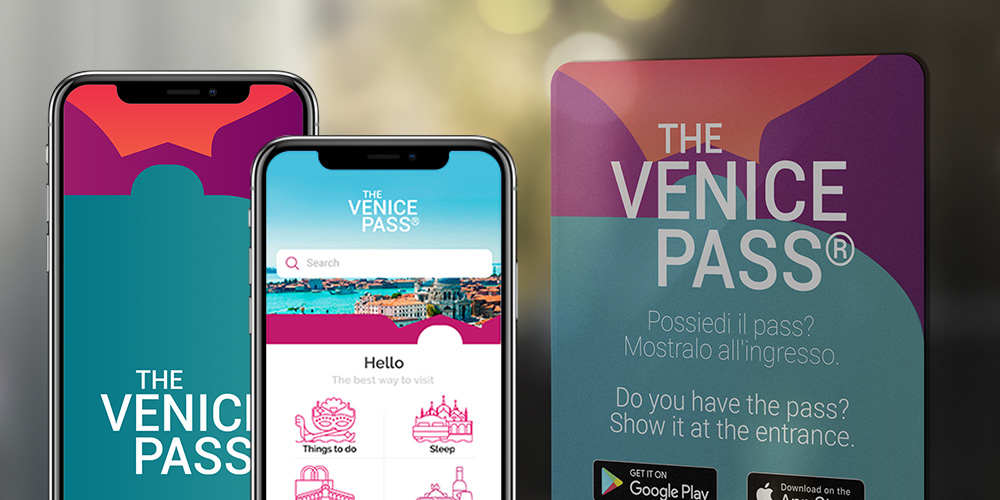
Discounts, museums and public transport in Venice
- Choose your accommodation
Best hotels in Venezia
Holiday Parks in Venice
Best vacation rentals in Venezia

Book your stay at discounted prices in Venice
- Tips for visiting Venezia
Info, luggage storage, useful numbers...
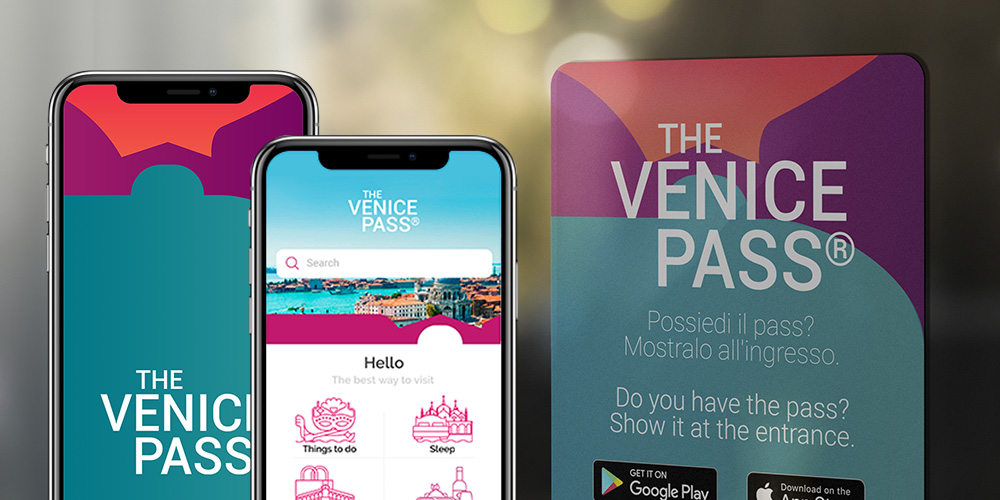
- Attractions
- Venetianity
Free access to the main attractions of Venice and get discounts in the best activities

- Free entrance to the main attractions of Venice
- Free public transport throughout Venice
- Discounts in the best Hotels, Restaurants and Shops
The city guide of Venezia and Veneto
Venezia activities.
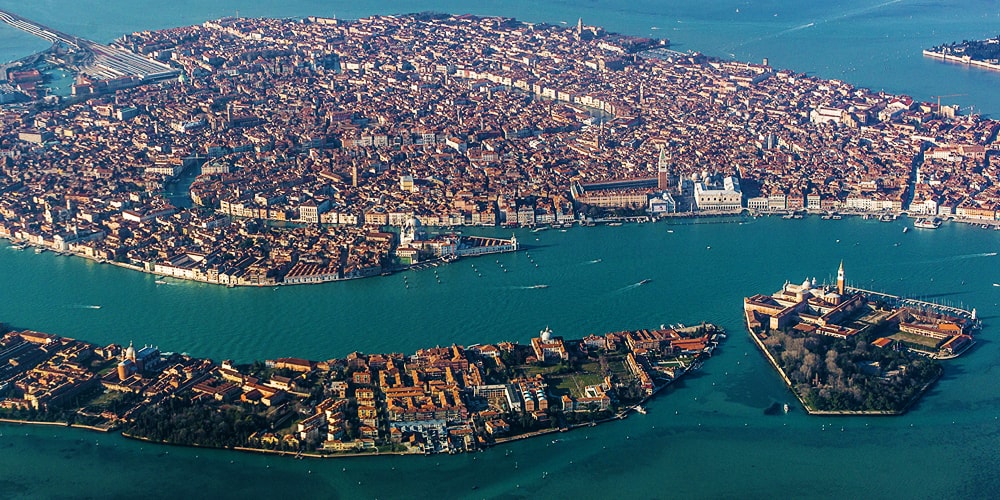
Info and useful tips to visit Venezia
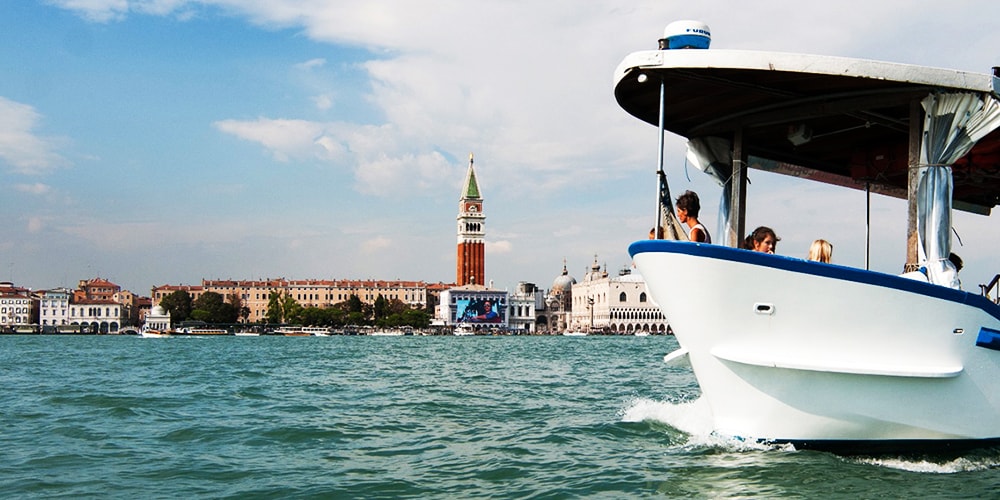
Venice transport: airport, train station and ferry boats
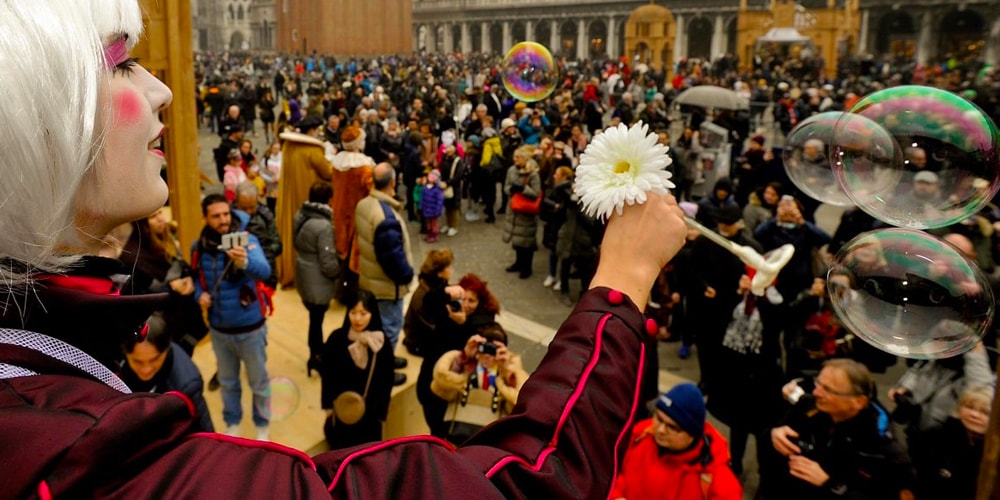
Venice for children: fun attractions for a holiday with children
Venice attractions, torre dell'orologio di piazza san marco, chiesa di san giuseppe di castello, chiesa di santa maria del giglio, scuola grande san giovanni evangelista, museo ebraico di venezia, basilica santa maria gloriosa dei frari, fondaco dei turchi: museo civico di storia naturale, sale monumentali della biblioteca nazionale marciana, discover venice, venice entry fee in 2024: all you need to know, venice carnival 2024: everything you need to know, where to stay in venice: the best hotels and areas, luxury holidays in venice: top 5 timeless experiences, things to do in venice on easter monday, 10 places to visit in spring in venice, easter holidays in venice: all the tips you need to know, 10 films shot and set in venice, 10 films shot and set in venice (part 2), flavours of venice, fried "moeche": the history and origins of a typical venetian recipe, risi e bisi: the recipe for the doge's first course, venetian street food: the best street food in venice and beyond, bigoli in salsa: a first course of traditional venetian cuisine, the castradina. venetian tradition for the madonna della salute, the feast of st. martin: the origins and the recipe of the traditional cake, the beans of the dead, the colored sweets of november 2, land and sea in venetian cuisine, an unexpected venice: kosher cuisine, videos of venezia.
Venezia is made of unique stories , stories you have to know , see and hear . We try to tell them, we try to enclose in our videos that Venetian essence in order to transmit it to as many people as possible.
We describe, the beauties , the colors , the sounds , the flavors of Venezia , we condense them into short videos that can be a quick and fun way to learn something about this wonderful city and, why not, inform yourself before or during your trip to Venezia.
Visit Venezia and do it right. You won't regret it.
Walk Venice
Luxury itinerary in venice: how to enjoy serenissima at its best, the 10 most romantic places in venice, 10 things to see in venice absolutely, things to do in venice at night, the most beautiful palaces on the grand canal in venice, how to reach veneto's unesco sites from venice. the practical guide, what to see in venice in a day, the bacaro tour: a venetian tradition, journey through the sestieri of venice, tales of venice, venice carnival 2023: all the events, venice: an itinerary on casanova's trail, festa del redentore 2022: full programme, anniversary of la fenice grand theater. a place of the soul for the city of venice, venice on april 25th with san marco and the bocolo feast, the 78th venice international film festival: all the winners, the legend of the red stone of venice, torcello island: the legend of the devil's bridge, 5 mysterious places in venice.

14 tips to make the best of your first trip to Venice Italy
Venice, Italy is your next destination, but you have no clue what to expect. Are we right?
If you are looking for tips for your first trip to Venice, you’re in the right place!
Our tips will help you to get the most out of your first trip to Venice and to fully enjoy the city.
Naturally, our Venice tips are valuable and can be helpful even if you have visited before!
Venice Tip #1 - When to go to Venice Italy
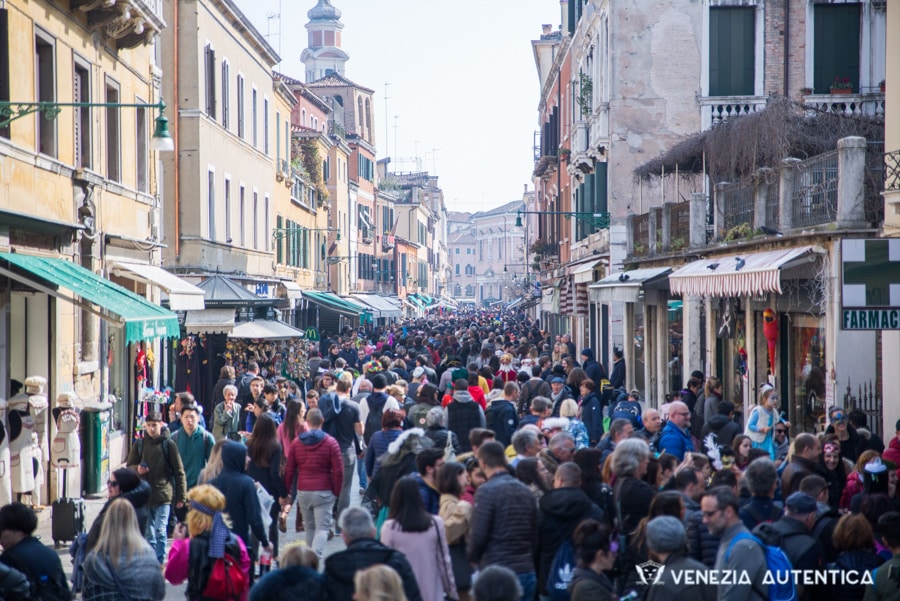
When choosing the best time to visit Venice Italy, there are 3 factors to consider:
- The weather
- Eventual events to attend
Avoiding the crowds:
To avoid crowds in Venice it is best to avoid weekends, late Spring and Summer, and Carnival.
These are, in fact, the busiest times in Venice.
However, keep in mind that tourism in Venice doesn’t really have an offseason.
What kind of weather to expect:
The weather in Venice is usually humid. As a consequence, perceived temperatures are generally more intense than one would expect.
In other words, hot days feel hotter and cold days feel colder than one would think by looking at the reported lowest and highest temperatures.
You can check out our article for a full breakdown of the weather in Venice throughout the year .
Events to attend:
Finally, also Events can be an important factor when deciding when to visit Venice.
The most famous events are Venice Carnival and the Art and Architecture Biennale .
Other events of interest could be:
- Festa di San Marco e del Bocolo
- Festa della Sensa
- Regata Storica
- Festa della Salute
You can find a full list of events on the city’s official website .
Venice Tip #2 - Best places where to stay in Venice
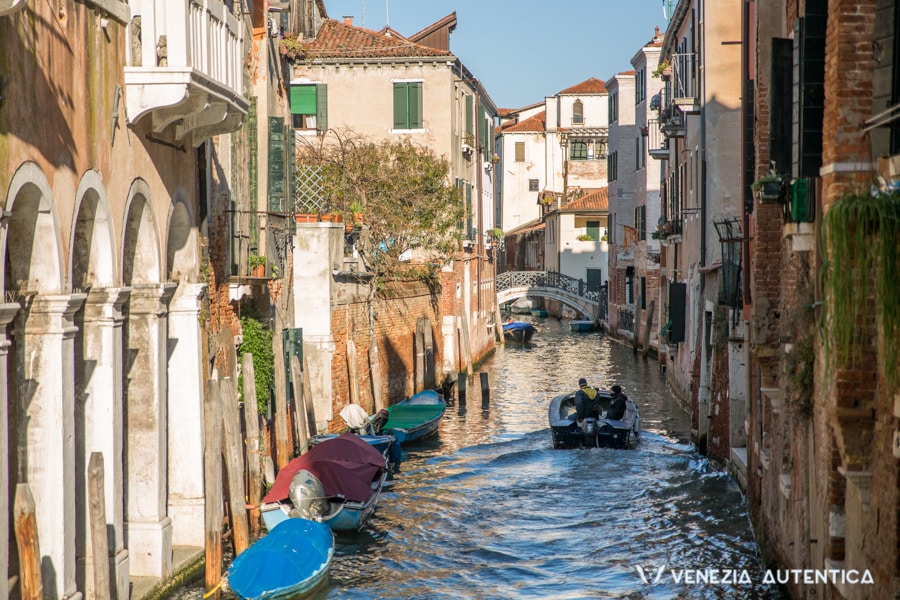
For the best experience of Venice, we strongly recommend you to stay within the historical city of Venice.
In other words, chose to stay on the “island” rather than on the “mainland”.
Doing so allows one to enjoy the city also before and after day-trippers have come and gone: in the morning and at night you will have the feeling that you have the city all to yourself!
Venice historical center is made of 6 districts: Castello, Cannaregio, Santa Croce, Dorsoduro, San Marco, San Polo.
The last 2 are the most touristy and crowded ones. Therefore, we would recommend you to stay in one of the other 4 districts for a more authentic experience.
You can learn more about the districts of Venice and everything you need to navigate the city, here.
Venice Tip #3 - Don't fear to get lost, explore.

A crucial tip for your first trip to Venice, Italy is to lose yourself.
Yes, forget about maps and the GPS on your phone!
Leave your hotel room or apartment and just walk in whichever direction you feel like going.
Losing oneself is the best way to discover and appreciate the stunning beauty of the tiny alleys and narrow canals which make the fabric of Venice.
Also, it makes for great photo opportunities and allows you to discover more of Venice and feel the Venetian atmosphere.
And don’t worry about your whereabouts: Venice is safe.
When we say that Venice is safe, we mean it is really, really, really safe.
So, take the chance to explore the city in depth alone or take part in a tour around Venice with us to make the best out of your visit!
Want more tips, tools and stories from Venice, Italy?
We're on a mission to make it easy and fun to discover and support the authentic Venice. Try our email and see for yourself!
Thanks for signing up! If there is no e-mail in your inbox in the next hour, remember to check your spam folder and to add us to your contact list. Thank you! Get access to our live videos and even more content: like us on Facebook to add daily goodness to your feed. A presto!
Oops! We're sorry, something went wrong. We'll fix it soon. In the mean time, you can like us on Facebook to stay in touch!
By signing up you agree with Venezia Autentica's privacy policy
Venice Tip #4 - Get on a boat to see Venice Italy from the water!

Venice was built surrounded by water and designed to be admired from the water.
Indeed, the façades of the most beautiful Venetian Palazzi can be seen only from the water.
Even the Doge’s Palace , the most important and spectacular building in Venice, was built to be admired first of all from the water!
In fact, its façade overlooking the lagoon was built 100 years before the one facing the land, the “Piazzetta” and the Marciana Library .
Therefore, when visiting Venice make sure to see it from the water. Take a Gondola, a private boat, a taxi or a water bus, whichever you prefer. But do it!
Gondola tours are one of the most beautiful ways to discover the city and explore its narrow canals.
Taxis were born as a transportation service but can also be booked for a sightseeing experience.
Private tours on rowing boats and kayaks are definitely a fun way to spend a few hours discovering Venice from the water.
Lastly, one can also board a public water bus and navigate the full length of the Grand Canal . This way, you can admire the stunning palaces all around the Grand Canal but will, unfortunately, miss all the narrow canals and tiny bridges that are so unique to Venice.
Venice Tip #5 - Eat authentic local food in Venice Italy. Even on a budget!

If you’d like to eat authentic Italian food, you can do so even if you’re on a budget.
Eating well in Venice without spending much is possible.
A good authentic bacaro serves tasty and affordable finger food that will leave you stuffed and satisfied.
However, also having an intimate dinner in a restaurant trying delicious Italian and Venetian plates is an experience we warmly recommend. To find the right place for you, check out the list of restaurants and places we recommend !
One more amazing way to discover Venice and taste the best of local food and wines is to take part in a private food and wine experience in Venice with us !
Finally, if you want to find the right place where to eat all by yourself, please check out our article that helps you understand how to spot the right places where to eat and those to absolutely avoid in Venice .
![when to visit venice italy 14 tips to make the best of your first trip to Venice Italy - venice italy - Venezia Autentica | Discover and Support the Authentic Venice - Visit Venice, Italy, like a pro! Our Venice travel guide to make it easy to plan your trip and know what to do and see in Venice, Italy [Updated 2022]](https://cdn1.veneziaautentica.com/wp-content/uploads/2017/09/trattoria-al-ponte-del-megio-sticker.jpg)
Unlock a discount at the best authentic local businesses in Venice
Venice tip #6 - spot and enjoy the best local bars, restaurants and shops by looking for the venezia autentica logo.
![when to visit venice italy 14 tips to make the best of your first trip to Venice Italy - venice italy - Venezia Autentica | Discover and Support the Authentic Venice - Visit Venice, Italy, like a pro! Our Venice travel guide to make it easy to plan your trip and know what to do and see in Venice, Italy [Updated 2022]](https://cdn1.veneziaautentica.com/wp-content/uploads/2017/08/0I5C5095.jpg)
To many people, it is important to find the right local businesses when travelling.
Where should I eat? Where should I shop for authentic products? Where should I stop for a good drink? Where is the best place for a Murano Glass bracelet?
The good news is that it is easier than you’d think:
You can find great local businesses by using our directories of local shops and bars & restaurants . Moreover, you can also look for the Venezia Autentica’s logo on shop windows when you’re walking around Venice.
Our logo means that the local business operates in a way that is positive both for you and the local community.
Those shops are locally owned and operated. They give decent jobs to local residents. They offer good quality to their customers and operate in a sustainable and responsible way.
Venice Tip #7 - Discover Venice with a local: the best way to see Venice Italy
![when to visit venice italy 14 tips to make the best of your first trip to Venice Italy - venice italy - Venezia Autentica | Discover and Support the Authentic Venice - Visit Venice, Italy, like a pro! Our Venice travel guide to make it easy to plan your trip and know what to do and see in Venice, Italy [Updated 2022]](https://cdn1.veneziaautentica.com/wp-content/uploads/2017/10/Cichetti-e1522489397293.jpg)
One of the biggest joys of travelling is meeting new people and discovering new cultures and ways of life.
Luckily, due to technology, it has never been easier to do so!
Group tours are generally affordable and a classic way to discover a new place. Unfortunately, they tend to be standardized and might not be the most rewarding experience.
On the other hand, private tours or activities are a bit more expensive but can adapt to your needs and match your personal interests.
Our Experience Booking platform offers many different private experiences in Venice.
You can take walks off the beaten path , try hands-on activities or food-oriented tours.
They are all excellent ways to discover Venice from a unique point of view and engage in meaningful conversations with a Venetian.
Venice Tip #8 - Free yourself from the fear of not finding a bathroom when you need one

A piece of very useful information we can give you is on… toilets!
Public toilets, in fact, are very clean but are not always easy to find. They also have a small cost of 1,50€.
When you find yourself in need of a restroom, our tip is to look for a bar. You can then order a coffee or a pastry and, as paying customer, you will be welcomed to access the bar’s restroom.
Please, do not just enter, use the toilet, and leave. Such behaviour is frowned upon in Italy.
Instead, check if the bar has a bathroom and then ask for a “caffè” (espresso coffee, 1€) or a “pastina” (a pastry, 1€ to 1,50€). After that, feel free to head to the restroom.
Venice Tip #9 - If you book a guided tour make sure your guide is a local
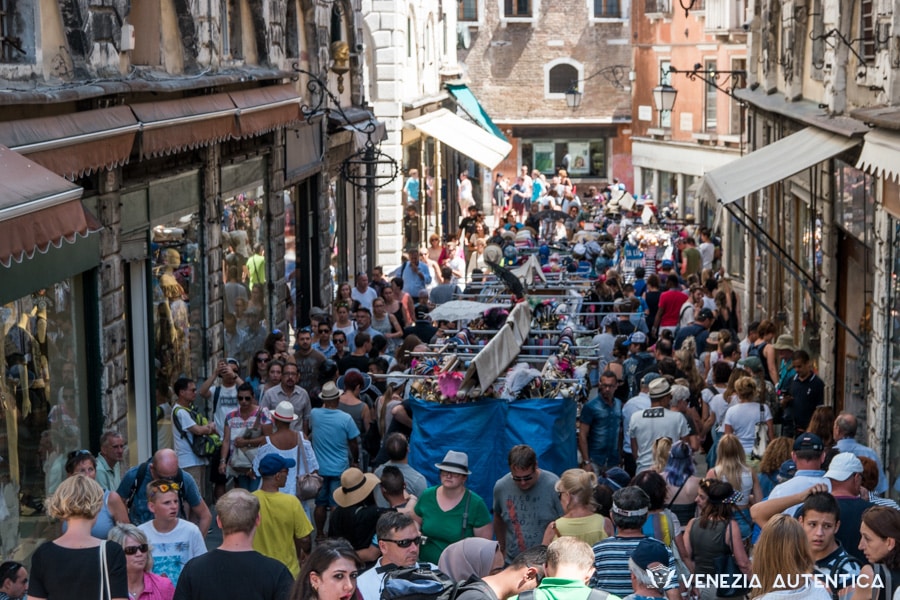
In 2014, the EU stated that all European guides and tour leaders have the right to work everywhere in Europe.
That sounds reasonable, doesn’t it? Unfortunately, not so much.
In Italy, people must pass a rigorous exam to become a guide or a tour leader.
The majority of other European countries, on the other hand, do not require a mandatory certification or license.
Unfortunately, the latest EU regulation allows anyone who does not reside in Italy to sell his/her service as a guide and lead groups to Italy.
As a consequence, travellers might not be aware that guides and tour leaders are not all the same and might be tricked into picking the wrong professional.
Indeed, there is a stark difference between a trained guide that lives in an Italian city and a person that has no training and visited an Italian city a few times.
This is why we suggest you don’t rely on (literally) “outsiders” as your tour guides.
A good local guide should know Venice inside-out, be able to answer your questions, and give you real insights.
On the contrary, people who do not know Venice might either stick to common knowledge available on most online articles or even tell wrong facts about Venice.
Therefore, if you want to tour the city with someone and have a good experience, make sure you’re going with a certified local tour leader.
If you’d like to do it with us, feel free to check out our private off-the-beaten-path walk with a certified local tour leader .

Book an authentic experience in Venice
Venice tip #10 - take the time to enter artisans shops to discover centuries old crafts and get the real thing.

Venice is a city with an incredible culture. Over the centuries, many unique crafts were born or adopted locally.
Nowadays, there is still a number of artistic artisans who are keeping centuries-old traditions alive in the city. Their workshops are a must-visit for arts & crafts lovers and for anyone interested in an authentic experience of Venice.
However, the invasion of mass-produced souvenirs is amongst the most visible things which are destroying the city and playing an important role in forcing the inhabitants to move out of Venice.
Recognizing authentic artisans shops is not easy. It requires a good eye and knowledge of the crafts.
However, there are few things which can help you understand whether or not you are likely to be in front of the window of an actual artisan or not.
You can find everything you need to know to shop local in Venice, here
If you are looking to understand the incredible culture of crafts in Venice from even closer and to enjoy a privileged moment with the master artisans, we invite you to attend experiences in the artisans’ workshops .
Booking carefully designed and curated private tours or activities with local crafts-masters is the perfect opportunity for either a fascinating guided visit of the best local craftspeople or hands-on private activities.
Craft classes are unique ways to discover Venice from another viewpoint and to be initiated to mosaic making , glass making , handmade bookbindings , and more centuries-old techniques, directly by master artisans
Beware of mass produced souvenirs!
Besides copying and unfair competition that puts local shops out of business, the other problem caused by some mass produced items is a threat to your health.
Cheap masks, for example, do not comply with EU legislation regulating colors and substances for wearable products: the contact with your skin is potentially dangerous.
We created a shortlist that summarizes the risks and annoying things you should be aware of when in Venice.
Venice Tip #11 - To save time and money at the best local shops, bars, and restaurants in Venice get yourself the Venezia Autentica Friends’ Pass
![when to visit venice italy 14 tips to make the best of your first trip to Venice Italy - venice italy - Venezia Autentica | Discover and Support the Authentic Venice - Visit Venice, Italy, like a pro! Our Venice travel guide to make it easy to plan your trip and know what to do and see in Venice, Italy [Updated 2022]](https://cdn1.veneziaautentica.com/wp-content/uploads/2017/08/0I5C5074.jpg)
By visiting this link , you can buy a digital pass giving you access to a 10% discount in Venice on a minimum expense of 30 euros at the best Venetian local businesses identifiable by the Venezia Autentica logo on their door or window.
All are locally owned, employ locals and offer authentic quality sustainable products and services.
Read more about how you can save money and time in Venice with the Venezia Autentica Friends’ Pass
Venice Tip #12 - For the best experience, leave those fancy and uncomfortable shoes behind
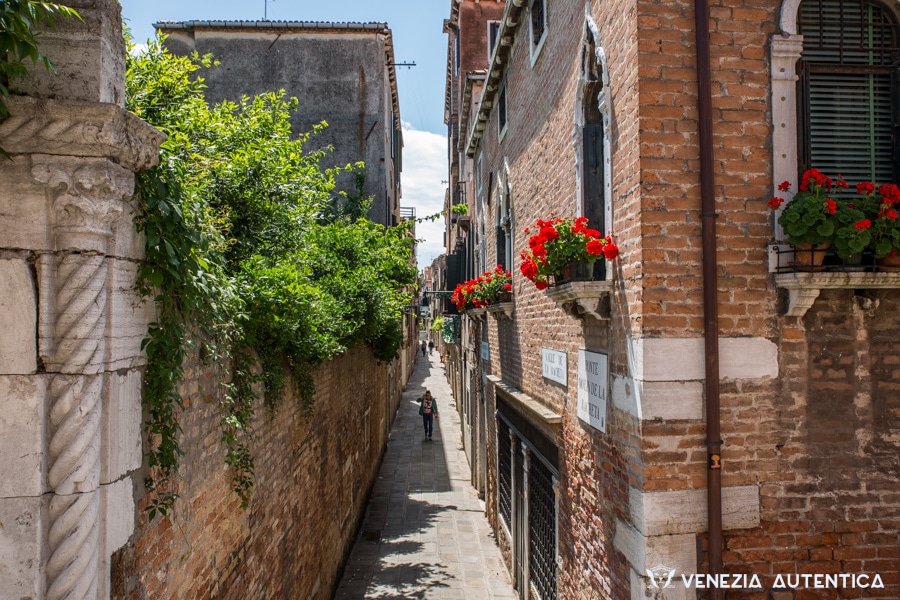
Don’t wear high heels . Trust us, do not wear high heels!
Venice Italy is an old pedestrian city, with uneven streets , that will require you to walk, and walk, and walk .
Even if you are planning to board a water bus , you’ll have a lot of walking to do to walk to the water bus stops, trying to navigate the uneven stone pavement , the bridges , and the crowds .
If you’re staying in your hotel or get picked up by a water taxi to go to a private party, high heels might be a fair choice. In any other case, trust us, you really don’t want to do it.
Your feet will thank us.
As Wikipedia points out, Venice is a pedestrian traffic-free city with almost 3.000 alleys… now you see the importance of wearing good shoes, don’t you?
Venice Tip #13 - Our ecological tip for your first trip to Venice: Carry a refilable bottle of water
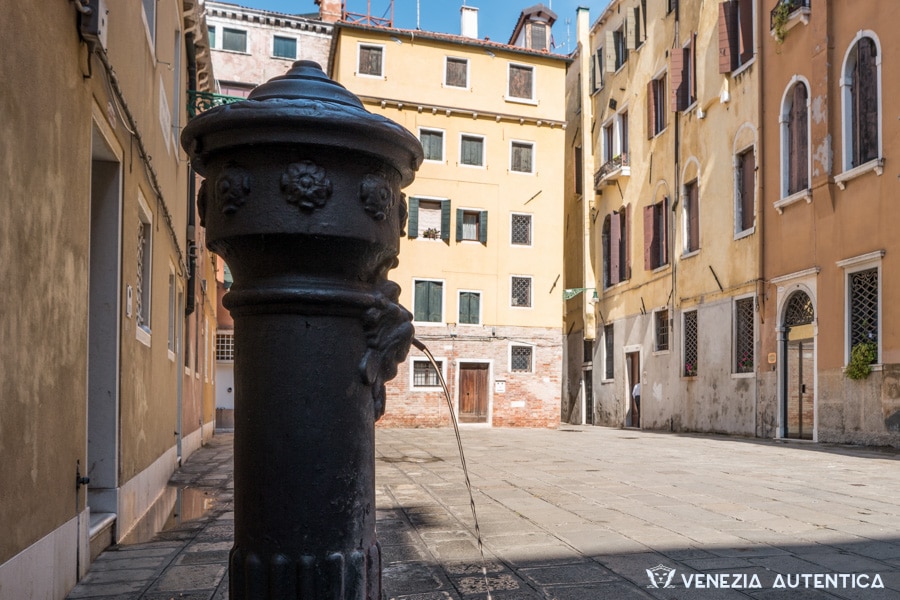
The water of the fountains in Venice is drinkable and of very good quality.
Almost every main square has a working fountain where you will be able to refill your bottle.
If you want to drink a prosecco, however, there is no such fountain yet. In this case, a stop at a bacaro will fulfill your needs.
If you care about your impact, read this New York Times article for more ideas on how to use less plastic in your everyday life .
Venice Tip #14 - Take some time to read our free insider guides to make the most of your time in la Bella Venezia!
![14 tips to make the best of your first trip to Venice Italy - venice italy - Venezia Autentica | Discover and Support the Authentic Venice 14 tips to make the best of your first trip to Venice Italy - venice italy - Venezia Autentica | Discover and Support the Authentic Venice - Visit Venice, Italy, like a pro! Our Venice travel guide to make it easy to plan your trip and know what to do and see in Venice, Italy [Updated 2022]](https://cdn1.veneziaautentica.com/wp-content/plugins/essential-grid/public/assets/images/300x200transparent.png)
Now you know plenty of things to do in Venice!
But, maybe, you now want to know even more about our beautiful city. Is that so?
In that case, make sure to check out our What is Venice, Italy article !
Do you have any tips or suggestions that you want to share with us and other visitors? Feel free to contact us and let us know!
If you found this article useful, make sure to check out also these resources to plan your first trip to Venice:
I'm visiting Venice. Why should I follow your recommendations?
The way you visit Venice has an impact both on the quality of your experience and on Venice itself. Chilling, exploring , shopping , eating and drinking where the locals do, can make a huge impact both on the memories you bring home and on the local economy and community.
POPULAR POSTS LIKE THIS
- Best Places where to eat and drink like a local in Venice
- Interactive map of the best authentic local businesses and places where to eat & drink in Venice
- Why eating and drinking at authentic local businesses matters
Liked this article? Don’t forget to share the love!
Home >> Visiting Venice >> Tips and Inspiration >> You’re Here
Tips and Inspiration to experience Venice
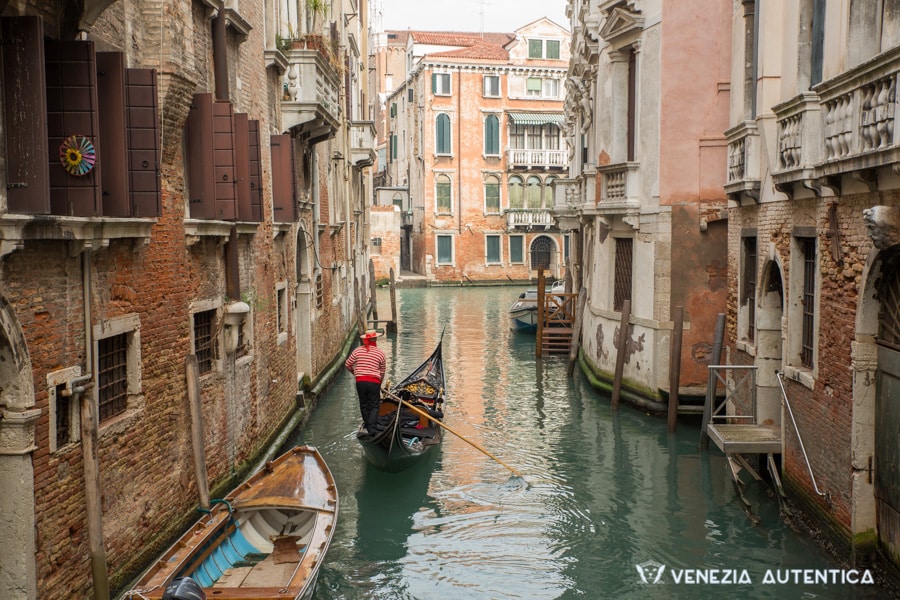
Want to go on a gondola ride in Venice? Here’s everything you need to know!
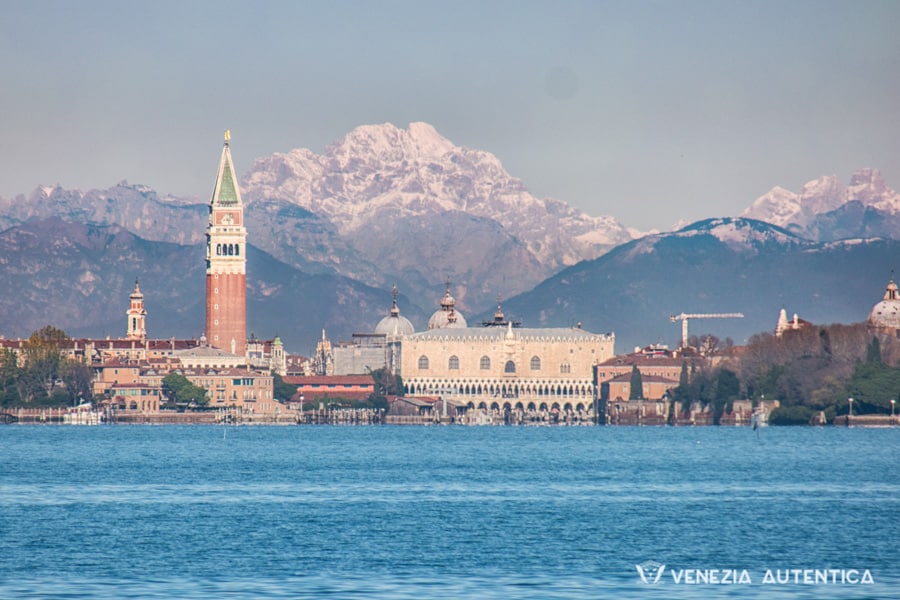
How’s the weather in Venice, Italy? We’ve got you covered!
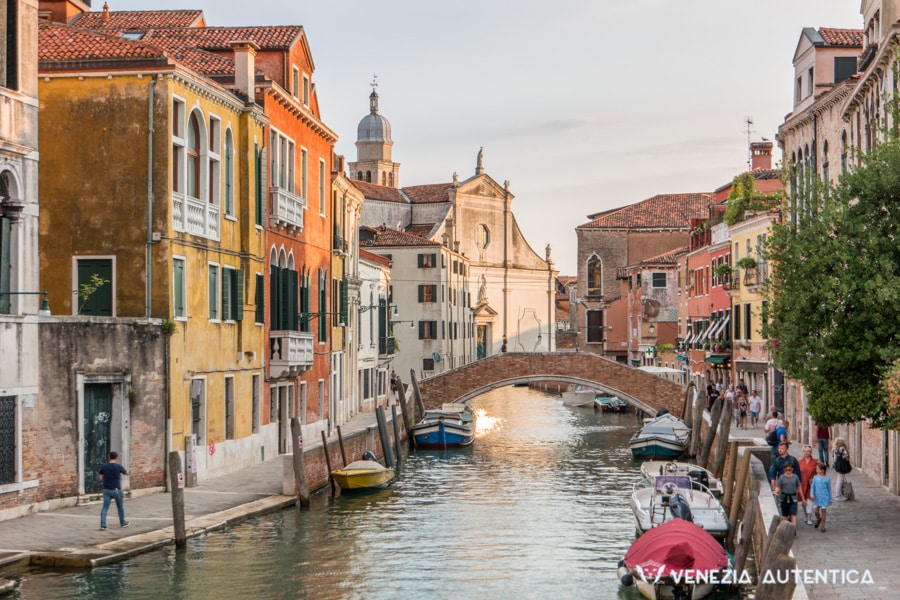
The ultimate guide to the top 10 things to do and see in Venice, Italy
More in Visiting Venice
Go to Visiting Venice >>
- February 9, 2022
You might also like
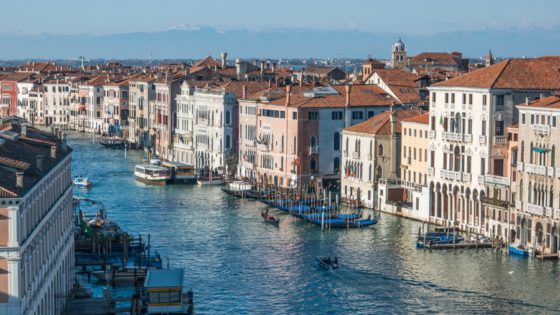
Everything about the amazing Grand Canal in Venice, Italy [ARTICLE + 360° VIDEO]
![when to visit venice italy Conegliano, Italy: a lovely Day Trip from Venice - venice italy - Venezia Autentica | Discover and Support the Authentic Venice - Visit Venice, Italy, like a pro! Our Venice travel guide to make it easy to plan your trip and know what to do and see in Venice, Italy [Updated 2022]](https://cdn1.veneziaautentica.com/wp-content/uploads/2023/05/PXL_20230212_150336523-560x315.jpg)
Conegliano, Italy: a lovely Day Trip from Venice
![when to visit venice italy Do you feel Venice is too busy? Treviso is an ideal getaway! - venice italy - Venezia Autentica | Discover and Support the Authentic Venice - Visit Venice, Italy, like a pro! Our Venice travel guide to make it easy to plan your trip and know what to do and see in Venice, Italy [Updated 2022]](https://cdn1.veneziaautentica.com/wp-content/uploads/2023/04/Treviso-13-560x315.jpg)
Do you feel Venice is too busy? Treviso is an ideal getaway!
- ONLY PRIVATE TOURS AND ACTIVITIES
We make it easy to experience Venice with local guides and experts
- 100% GUARANTEED LOCAL AND IMPACTFUL
Looking for things to do in Venice? Experience Venice with a local!
We’d love to chat.
Let us know
how we can help

How Many Days in Venice? Planning a 2, 3 or 4-Day Itinerary
Last Updated on November 28, 2023
by Daniella Lynn Theis
Disclaimer: This article contains affiliate links. That means if you click a link and make a purchase, we may make a small commission. As an Amazon Associate we earn from qualifying purchases. For more information, see our privacy policy.

If you’re planning a visit, you are likely wondering how many days in Venice you should plan into your itinerary. Ideally, you should plan to spend at least 3 to 4 days in Venice to allow you to see the main attractions, as well as visit some islands and even, go on a day trip.
Venice is one of the most popular tourist destinations in the world – and rightly so! The historic Italian city is truly one-of-a-kind. The picturesque canals of Venice, winding alleyways and centuries-old buildings are loved by locals and the millions of visitors it receives each year alike.
The options of things to do in Venice are almost endless, and itineraries can look very different depending on personal interest. Let it be history, food or nightlife – Venice has something for everyone!
Table of Contents
How Many Days in Venice?
To decide how many days to spend in Venice, you must decide before your visit what is important to you. It is possible to see some of the city with one day in Venice, but to really soak in the city and its offerings you should plan in at least 3 to 4 days in this incredible city.
I would say that spending 2 days in Venice is the absolute minimum – and even then you won’t have time to dig deeper in the neighbourhoods or to go on a day trip in the Veneto region.
To do the city justice, I would recommend planning in at least 3 days in Venice. This will allow you to see the main attractions, as well as soak in the other areas outside San Marco such as San Polo and Cannaregio and give you enough time to also visit the islands surrounding the city.
Spending 4 days would furthermore allow you to explore the Veneto region and other cities such as Treviso or Verona – the city in which Shakespeare’s ‘Romeo and Juliet’ was set in.
Venice is a walkable city, and a lot of the main attractions are located around the San Marco area. However, during peak season, Venice is also a bustling city.
It is also important to note that there are no roads or cars in Venice as it is made up of several islands connected through canals in the Venice Lagoon. While there is public transport in the form of boats, you either need to plan in how much time you will spend walking (make sure to invest in comfortable walking shoes !) or using public transport to get to your destinations.
An average of 24 million people visit the city each year. Delays while walking the narrow streets and queues outside and within the main attractions are likely during these times, all of which mean that you might not be able to achieve all you desire within one day.

Getting To & Around Venice
Venice can be reached through two airports. One is outside Venice in the mainland city of Treviso, and Marco Polo is just across the lagoon. Both airports are connected to the city through public transport.
Treviso airport has a direct bus to Venice’s Piazzale Roma that takes approximately one hour. Marco Polo Airport also has a bus service to Piazzale Roma , which takes about twenty minutes.
You can also book a private transfer if you prefer to have a stress-free journey from the airport.
Should you be looking to get closer to your accommodation from Marco Polo airport, the blue Alilaguna line boat service stops at several points across the central lagoon such as Fondamente Nuove in Cannaregio and San Marco within about half an hour. If your Venice trip budget allows it, there are also shared water taxis that will take you directly to your hotel.
It is also possible to arrive to Venice by train from a nearby city such as Bologna , Milan or Florence , it’s best to book tickets in advance to get the best fares – you can click here to browse train routes and availability.
There are no roads or cars in Venice. The public transport system consists entirely of boats run by the ACTV network. Boats often serve several stops along the Grand Canal as well as providing access to the islands outside Venice such as the island of Burano or Giudecca.
Services run very frequently – usually every 10 to 15 minutes within the hour – and you will often be sharing your ride with locals and other travellers alike. Detailed timetables can be obtained directly from ACTV. The company also offers its own app for iOS and Android that makes scheduling trips a lot easier.
While there is public transport in Venice, it is definitely possible to plan your full itinerary for Venice entirely on foot. Walking along the narrow alleyways and canals is what inspired the real feeling of being in Venice for me. Most districts are connected through bridges and Venice also has quite a few street signs to keep you on track. It is easy to get lost, but that is almost the best thing about it.
Overall it is still quite easy to get from one place to another by walking. Especially if you are trying to see the main tourist attractions around San Marco, it is possible to do entirely by foot. However, it is worth noting that there are stairs – lots of them, in fact.
Venice by foot is going to be more tricky if you have trouble using stairs or have a pram with you. I have seen people lifting wheelchairs and prams across these steps, but it is something you need to be aware of if you are considering navigating Venice by foot.

2, 3 or 4 Days in Venice Itinerary
So, you are starting to plan your Venice itinerary, but what to do? During your first two days, you will want to try and see as much of the city as possible. Luckily, it is definitely possible to tick off many popular tourist sites and explore many of the city’s charms and quirky attractions within 2 days.
Should you have the option to stay for three days, you can then also learn more about the surrounding islands and their cultural heritage. Of course, it is hard to narrow down exactly what to see and do, especially if you are looking for some activities outside of the typical sightseeing ‘agenda.’
Day 1 – See the Highlights of Venice
Start your day at rialto bridge (ponte di rialto).
The bridge is probably one of the most famous sights in Venice in terms of how often it has been pictured in photographs. It stretches over the Grand Canal connecting the areas of San Marco and San Polo. Do not cross over just yet this time. Just stand and marvel at the beautiful architecture gaze on to the Grand Canal in front of you.
The bridge can get quite busy at times, so if you feel too overwhelmed by crowds when on the bridge, be sure to take a stroll down one of the side steps and walk along the grand canal. There are plenty of restaurants to choose from there should you not have had breakfast yet or be needing a coffee top-up.
My recommendation would be to keep your eyes peeled when looking down the side streets between restaurants. Tucked away down the darker alleyways, apart from the hustle and bustle and crowded tourist hotspots you will often find a bacaro – a traditional Venetian bar.
These bars are usually a lot more ‘stripped back’ and also come with less of a tourist price tag. They are also a great way to meet some locals and get your first glimpse at what Venetians do.
From the bridge, you will want to make your way towards the San Marco area, as many of the cultural and historic tourist sites are located there. If you have time for a detour, try and visit the Libreria Acqua Alta .
The unusual bookstore has shot to fame more recently as pictures of tourists posing within it have become prominent on social media, but it is definitely still worth a visit due to its one-of-a-kind concept.
The bookstore sells new and used books that are shelved on gondolas, boats and other random items. Old books themselves have been turned into part of the store. One great feature is the book staircase one can climb to take a look over the canal.
If you want another view of the Rialto Bridge, no visit to Venice is complete without a gondola ride on the Grand Canal. You can book a gondola tour here .

Stroll along St. Marks Square (Piazza San Marco )
Make sure that while you are walking along the area to not rush or ignore your surroundings. The streets are quite narrow, but you will find many great shops and eateries tucked among them.
We tried some of the best chocolate and gelato I ever had all while making our way around San Marco and had a chat with a Venetian local while standing squeezed against an on-street coffee bar for a midway espresso. That being said, try and be considerate of the locals and let people pass beside you in the narrow streets.
When you arrive at Piazza San Marco, take a moment to take in the scene and breathe. Piazza San Marco does really make you feel like you stepped back in time (despite the potentially large tourist crowds). The open square is surrounded by an arcade of shops and beautiful architecture.
Right in the centre of the square, you will find the Basilica di San Marco . The building boasts some beautiful architecture – it is held up by dozens of marble pillars that are all a different colour – and features some paintings on its exterior which showcase Venice’s cultural heritage.
The church can be visited by tourists (you can book skip-the-line entry tickets here and guided tour tickets here ), but there are some days when it is closed for worshippers only.

Around the Piazza, you will find the Museo Correr – a museum full of historical and cultural artefacts housed in the Napoleanic wing of the Piazza. The square is also home to the famous Café Florian . This renowned café comes with a hefty price tag, but it is a century-old establishment, and for many, it is worth the splurge. It serves up anything from prosecco to coffee and food.
Turning away from the square towards the shore, you will find the Doge Palace . It was the residence of the Doge of Venice, the supreme authority of the former Venetian Republic but is now a museum. If you walk along the shoreline and the outside of the palace, you will reach the famous ‘Bridge of Sighs’.
The bridge was built to connect the newly built prison beside the Doge palace with the interrogation rooms of the court within the palace. It is said to have its name as it was the last view of Venice that convicts saw before their imprisonment.
If you’re planning to visit even more museums during your days in Venice, then this Museum Pass gives you entry to eleven museums, including the ones mentioned above.
If you want to see a lot of these sites in more context, it can also be a great idea to book a guided walking tour. This walking tour takes visitors to a mix of main sites and hidden places. And this guided tour will take you through the former Jewish Ghetto of Venice where you can learn about the Jewish history of this city.

Find yourself a good view
You have now successfully marvelled at the historic architecture of Venice and have ticked off some of the ‘must-see’ sights. But it is not time to relax just yet. Venice is not only beautiful to walk around in.
There are also many great viewpoints to marvel at the city from above. Right in St. Marks Square, you have the San Marco campanile – the bell tower on the Piazza San Marco. Unfortunately, the wait time to actually be able to go up the tower is often very long.
However, there are some great alternatives to skip the queue: The Fondaco dei Tedeschi is located next to the Rialto Bridge and now houses a shopping centre (Duty-Free Venice) with a rooftop that gives excellent views overlooking the city.
Another option is the Scala Contarini del Bovolo. This beautiful mansion is hidden away down one of the side streets not far from St. Marks Square. Even if you decide not to climb the stairs, it is definitely worth a visit just to see the unique exterior of this building.
If heights are not for you, you do not need to worry. Soak up Venice’s beauty by walking along the shoreline instead. Overlooking the lagoon is very serene, especially at sunset! If you walk towards the area of Castello, you will soon find yourself in a park far away from the hustle and bustle of San Marco.

Try some local cuisine and unwind
Have an Aperol Spritz (or two) paired with some cicchetti – the Venetian version of tapas. These are small bits of bread with a selection of different toppings and are seen as snacks to have before dinner by Venetians.
If you are looking for something more hearty than cicchetti , you will find plenty of selection, but keep in mind that the area of San Marco comes with a higher price tag. Our favourite place in the area was Osteria la Staffa (located down a side street about five minutes from the square).
For those who would rather have a knowledgeable local guide them through this Venetian food tradition, consider booking a food tour of Venice where you can learn all about cicchetti and other local delicacies. Another great option is this Venice street food tour .
If you are looking for some entertainment (and do not mind the price tag), then there is often some live music playing in St. Marks Square at night, and you can enjoy it while seated in one of the outside tables of one of the restaurants.

Day 2 – Explore Venice’s Neighbourhoods
Explore san polo.
Again, start your day at Rialto Bridge but this time cross over into the area of San Polo. What you will notice straight away is that the area itself is a.) much quieter and b.) much cheaper.
Close to the bridge, you will find the Rialto Fish Market. Let your senses guide you there…it is easy to find! It is definitely worth a visit even if you do not intend to buy anything. The selection of fish, seafood, fruits, vegetables and other offerings is eye-opening (and mouth-watering).
The area of San Polo is beautiful. Walking along you have the same narrow streets as in San Marco but will also find many big open squares and colourful buildings. Breakfast in San Polo is a lot cheaper, and there is an excellent selection of local cafes to choose from.
The area also has a great selection of museums and beautiful churches. Grouped together in one corner of San Polo you will find a museum dedicated to Leonardo Da Vinci, a beautiful church and the Scuola Grande di San Rocco – an art museum featuring a ceiling covered in paintings and gold.

Explore Dorsoduro
The neighbourhood of Dorsoduro houses several great museums and beautiful walks along the canals. It is one of the most picturesque places in Venice, in my opinion, and the further bonus is that you are sharing your space with far fewer people.
Being a student area, the nightlife in Dorsoduro is said to be fun as well. A further benefit of the area being popular with students is that it is also cheaper.
In terms of museums and things to do, it is definitely worth visiting the Accademia Art Gallery and the Peggy Guggenheim collection. Both are absolutely outstanding art galleries. The Accademia Art Gallery is more focused on fine art and traditional Venetian art, whereas the Peggy Guggenheim collection concentrates on European and American art of the first half of the 20th century.
If you walk along, you can sit on the steps of Basilica di Santa Maria Della Salute. Likely you will have seen the building already when looking across the bay from the shores of San Marco. See if you can spot some places you visited yesterday!
Cross over the Accademia bridge back to the area of San Marco
The wooden structure of the bridge might pale in the shadows of what you previously saw when walking along the Rialto Bridge, but it is still lovely in its own way – especially the view you get of the Grand Canal!
The bridge is also less busy than the Rialto Bridge, so if you are looking to get a snap of you overlooking the Grand Canal, then this might be your best shot.
Across the bridge, you are back in the area of San Marco and can maybe tick off some other sights that you missed yesterday. One you should visit is the Teatro La Fenice. It has housed several great operas in the past and still has many shows on today.
There are guided tours available so you can get a glimpse of the beautiful, gold-engulfed interior.

Walk to Cannaregio and enjoy the nightlife among Venetians
We stayed here during our visit, and from our first day onwards we loved this area. It is always bustling with locals chatting over a glass of wine, and there are so many great bars, eateries and shops! It even has a supermarket that is situated in an old theatre. It is here where you will get to enjoy life like a true Venetian.
To end your busy day, pick a spot you love to gain a further taste of Venetian cuisine. If you are feeling adventurous, why not try a famous local dish: Spaghetti al Nero di sepia – squid ink spaghetti? You will get this dish in many Osterias. It depends entirely on you whether you want to sit beside a canal or in a market square or down a small side street to end your day exactly how you like it.
We also found a fantastic Jazz Bar tucked down one of the side streets, so it is good to just keep your eyes peeled while walking along.
Day 3 – Visit the Surrounding Islands
Day trip to islands.
Venice itself is made up of several islands connected through bridges and canals, but outside of the central city itself, you have other islands that are definitely worth a visit.
There are several great islands to choose from which all have their own history and heritage. Examples are the island of Burano – known for its beautiful lacework and colourful homes – and the island of Murano – known for its beautiful coloured glassware.
Other islands include Giudecca, which is only a five-minute Vaporetto ride from busy San Marco but is by far quieter. If you already have an ACTV Vaporetto ticket for the day, you can use it to get to the islands surrounding Venice.
All islands have boats driving to them leaving from intermediate stops such as San Marco Pier and Fondamente Nuove in Cannaregio and the journey time is often less than half an hour.

Go to the beach
If you had enough of the city life (or if you are someone who needs a day of lying in the sand somewhere to truly get that holiday feeling), you could visit one of Venice’s surrounding beaches. You can find beaches on the nearby island of Lido which again can be reached using your ACTV ticket.
Day 4 – Venice Day Trips
Taste some prosecco.
Did you know prosecco is from the Veneto region? Now you do. Outside Venice in the Veneto region, you will find several excellent wineries, and you can book a day tour here to learn more about the region and enjoy a tasting!
Day trip to Treviso
The town of Treviso lies just outside Venice and is often entirely ignored due to Venice’s popularity. It is smaller than Venice, but also less dependent on tourism, meaning you will find fewer tourist traps and more culture. Treviso can be reached by train from Venice within about half an hour, and tickets cost less if pre-booked.
Day Trip to Verona
Verona was the city featured in Shakespeare’s ‘Romeo and Juliet’ – you can even visit the houses that are said to have been the inspiration for Romeo’s and Juliet’s residences.
Within the heart of Verona, you will find a fantastic amphitheatre that will remind you a little bit of the Colosseum in Rome (or across the Adriatic in Pula, Croatia !) – sometimes there are shows you can watch within the theatre!
Overall, Verona is a charming city full of good food, architecture and nightlife and is a great day trip option from Venice! You can reach Verona easily by direct train from Venice within about an hour. It is also possible to book a guided day tour.

Where to Stay in Venice
Ca’ Angeli — This small, centrally-located hotel is an excellent place to stay if you have a slightly higher budget and are looking for a bit of luxury on your trip to Venice. Located in the San Polo neighbourhood, this small hotel only has 6 clean and comfortable rooms available and there is also an excellent breakfast included in the nightly rate.
Riva del Vin Boutique Hotel – This hotel, located within a stone’s throw of the Rialto Bridge, is the perfect place for those looking for a bit of classic, romantic luxury on their trip to Venice. There are a handful of chic and comfortable rooms available, a bar on site, and a great breakfast included in the nightly rate.
Combo Venezia — This locally-run hostel is an excellent place for those who are travelling solo or on a tight budget. Located in the Cannaregio neighbourhood, they have both dorm and private rooms available and great facilities to help you meet other travellers.
Not quite what you’re looking for? Click here to browse more Venice hotels!
As you can now tell, there are so many great things to do in Venice, and hopefully, you will now have a better idea of some of the things you could do yourself. Venice is a genuinely magnificent city. If you are finding yourself wondering how many days in Venice are enough, then the real answer is subjective to what it is you want to see during your time in Venice.
Are you visiting Venice? Have any questions about this itinerary? Let us know in the comments!

Related Posts:

One Day in Bergamo Itinerary: A Day Trip From Milan

Lake Como or Lake Garda: Which Italian Lake to Visit?

The Ultimate 1, 2 or 3 Days in Palermo Itinerary

About Daniella Lynn Theis
Daniella is a writer for The World Was Here First. Based in in Glasgow, Scotland, she has lived in several different countries and is always on the hunt for adventures, trying to find even the most hidden secrets for any destination. In her spare time, she loves photography and finding new eateries and things to do in or around Glasgow.
Leave a Comment Cancel reply
- Skip to main content
- Keyboard shortcuts for audio player
A day trip to Venice will require a reservation — and a fee
The Associated Press
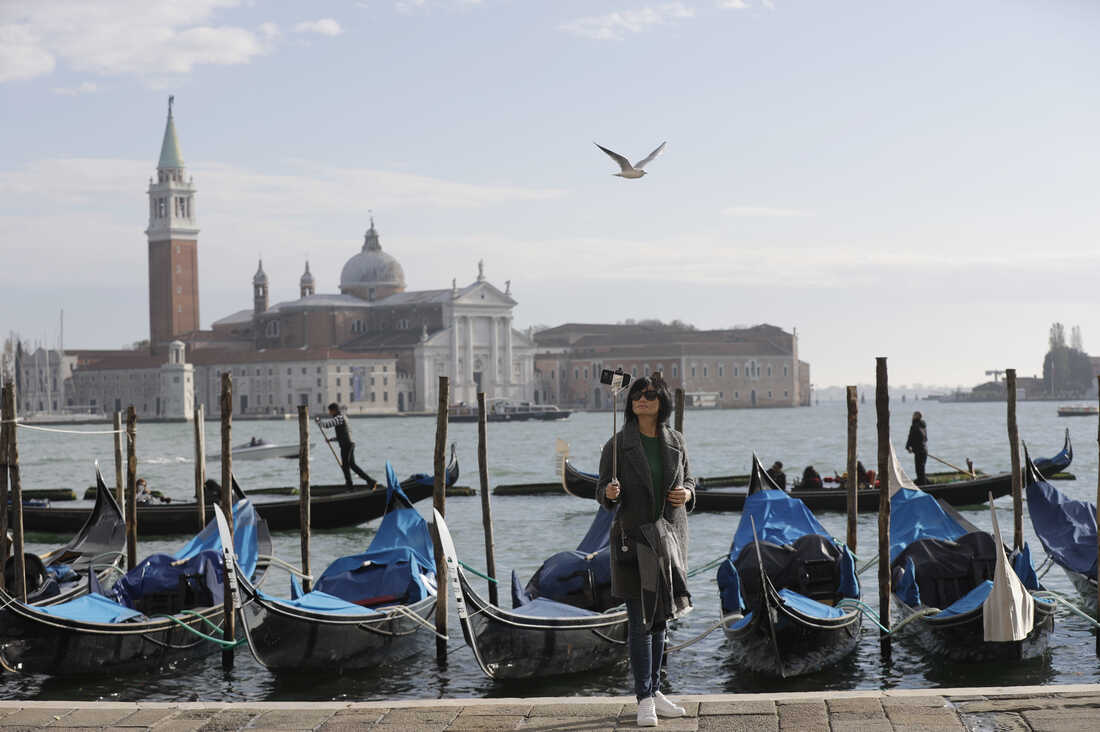
A tourist takes a selfie in St. Mark's Square in Venice, Italy, in 2016. Starting in January, the city will require day-trippers to make reservations and pay a fee to visit. Luca Bruno/AP hide caption
A tourist takes a selfie in St. Mark's Square in Venice, Italy, in 2016. Starting in January, the city will require day-trippers to make reservations and pay a fee to visit.
ROME — Starting in January, Venice will oblige day-trippers to make reservations and pay a fee to visit the historic lagoon city, in a bid to better manage visitors who often far outnumber residents in the historic center, clogging narrow streets and heavily-used foot bridges crossing the canals.
Venice officials on Friday unveiled new rules for day-trippers, which go into effect on Jan. 16, 2023.
Tourists who choose not to stay overnight in hotels or other lodgings will have to sign up online for the day they plan to come and pay a fee. These range from 3 to 10 euros ($3.15 to $10.50) per person, depending on advance booking and whether it's peak season or the city is very crowded.
Transgressors risk fines as high as 300 euros ($315) if stopped and unable to show proof they booked and paid with a QR Code.

From the archives
With waters rising and its population falling, what is venice's future.
Roughly four-fifths of all tourists come to Venice just for the day. In 2019, the last full year of tourism before the pandemic, some 19 million day-trippers visited Venice and provided just a fraction of the revenue from those staying for at least one night.
Venice's tourism commissioner brushed off any suggestion that the measure would seek to limit the number of out-of-towners coming to Italy's most-visited city.
"We won't talk about number cutoffs. We're talking about incentives and disincentives," Simone Venturini told a news conference in Venice.

Tourists stroll in downtown Venice in 2016. On many days, the heart of the city is overwhelmed by visitors, who often far outnumber residents. Luca Bruno/AP hide caption
Tourists stroll in downtown Venice in 2016. On many days, the heart of the city is overwhelmed by visitors, who often far outnumber residents.
The reservation-and-fee approach had been discussed a few years ago, but was put on hold during the pandemic. COVID-19 travel restrictions saw tourism in Venice nearly vanish — and let Venetians have their city practically to themselves, for the first time in decades.
Mass tourism began in the mid-1960s. Visitor numbers kept climbing, while the number of Venetians living in the city steadily dwindled, overwhelmed by congestion, the high cost of delivering food and other goods in car-less Venice, and frequent flooding that damages homes and businesses.
Since guests at hotels and pensions already pay a lodging tax, they are exempt from the reserve-and-fee obligation.
With the new rule, Venice aims to "find this balance between (Venetian) resident and long-term and short-term" visitors, Venturini said, promising that the new system "will be simple for visitors" to manage. He billed Venice as the first city in the world putting such a system for day-only visitors in place.

As tourists crowd out locals, Venice faces endangered' list
The tourism official expressed hope that the fee-and-reservation obligation will "reduce frictions between day visitors and residents." In peak tourism system, tourists can outnumber residents 2-to-1, in the city that measures 5 square kilometers (2 square miles) in area.
Venice's resident population in the historic city numbers just over 50,000, a small fraction of what it was a couple of generations ago.
Exceptions to the day-tripper fees include children younger than 6, people with disabilities and those owning vacation apartments in Venice, provided they can show proof they pay real estate taxes.
Cruise ships contribute to the hordes of visitors swarming Venice's maze of narrow streets, especially near St. Mark's Square, when they disembark day-trippers for a few hours. Those visitors will have to pay, too, unless their cruise liner company pays a set fee to Venice.

16 Things to Do in Venice Italy in One Day
Looking for things to do in Venice Italy in one day? We've got you.
Though I would never suggest you spend just one day in Venice, it helps to have a list of activities that you could accomplish in one day.
Whether you take your time or really do only have 24 hours to explore, I hope this list helps you to fit in as much as possible.
We were able to see Venice as part of a Viking Ocean Cruise . Not only did we begin the cruise in gorgeous Venice, but we saw parts of Slovenia, Croatia, Montenegro, and Greece.
This meant checking off four new countries for me, finally taking the number of countries I've visited to over 40! Think of places you want to see and Viking probably goes there!
I think Italy has become my favorite country, especially after spending a week in Sicily last year and a week later exploring Venice for a few days. For a foodie like me, it's pretty much heaven.
Where is Venice Italy?
Located on the shores of the Adriatic Sea, the beautiful city of Venice is in the northeastern part of Italy. It’s about a six-hour drive from Rome. If you’re flying, you can get between Rome and Venice in about an hour.
Venice is actually not on the mainland part of Italy. It is an archipelago of islands all connected by bridges over a series of interconnected canals.
This unique geography is why it has nicknames like City of Water, The Floating City, and City of Canals. The historic city and lagoon area are a UNESCO World Heritage Site.
Due to its coastal location, you’ll find Venice has cool and damp winters, sometimes even with snowfall, and warm, humid summers. The summer months might just be the best time to visit as the crowds like to explore the city in Spring and Fall.
Why We Love This City
There are so many reasons to love Venice. It’s no wonder why this is one of the most popular cities for tourists in the world. But here are some of the reasons why we love this city.
Food We love appetizers and Venice has so many small plate dishes like cicchetti (think Venetian tapas!) and bruschetta. The flavors are incredible.
Culture & History The Byzantine-influenced architecture of the city is simply stunning. Add to that all the incredible – and yet different – styles of bridges.
With 118 islands in Venice, of course, you’ll need bridges to get from one to another. The islands are linked by over 400 bridges. Though all pretty, there are only a handful that are famous, so it's worth the time to seek them out.
I take a travel guide everywhere I go so I can look things up as I explore.
Floating City In general, the idea of a floating city is really unique. Technically, the city is built on marshy land, but with a support system going back centuries to help keep buildings above the water.
The supports were built with wood, and although you’d think they would rot over the years, the lack of exposure to oxygen and the sediment in the water actually petrified the logs, making them durable today.
Even so, Venice is at risk from “acqua alta”, high water, as severe flooding has become more and more common.
Where to begin when exploring the Queen of the Adriatic? We have recommendations for you of the most important things to see in Venice Italy in one day.
See the Most Beautiful Bridges
Venice may be the city of canals, but that means there are also a lot of bridges to cross the canals – more than 430 bridges!
These bridges are a mix of classical designs to modern designs, Some of the most well-known ones include the Scalzi Bridge, the Constitution Bridge (Ponte di Calatrava), and the Ponte dell’Accademia (the Academy Bridge).
Probably the most famous bridge is the Rialto Bridge, which spans over the Grand Canal. Make sure to grab a photo with the Rialto Bridge (Ponte di Rialto) in the background.
Of course, the Bridge of Sighs is famous, too, but for different reasons as you'll see below.
Visit Piazza San Marco
Piazza San Marco, also known as St. Mark’s Square is a UNESCO World Heritage Site and one of the most famous squares in all of Italy. It’s a must-do for your Venice itinerary!
From the square, there are several other places you’ll want to explore, but the square itself is also worth exploring.
As a large, open square, it stands in contrast to the rest of Venice with narrow streets and alleys. It is one of the best places to grab a coffee and people watch.
Explore Basilica San Marco
One of the most notable locations at St Mark’s Square is the Basilica San Marco (St. Mark’s). Inside, you’ll find fabulous mosaics, Byzantine-style architecture, relics of St. Mark, and more.
There’s no admission fee to go in, but it can end up with long lines as it is a very popular place. Booking a guided tour is a good option to make sure you're able to see all the magnificent St. Mark's Basilica has to offer.
Even from the outside, however, this church has exceptional architectural features with intricate spires and domes. The gold shimmers in the sunlight on the wings of statues of angels and mosaics high above the church.
Unfortunately, there was scaffolding up while we were there, but it was still beautiful.
Address: P.za San Marco, 328, 30100 Venezia VE, Italy
Hours: Daily 9:30 a.m. to 5:15 p.m.
Take a Tour of the 500-Year-Old St. Mark’s Bell Tower
Go up to the Bell Tower of Basilica San Marco for one of the best views of the whole city. You will need a ticket and it’s best to get it ahead of time as this is one of the top attractions.
Order online and print or screenshot (or both) your confirmation to show when you arrive.
Everyone was offering to take photos of each other.
The tower is about 99 meters high, and from the top, you can see Doge’s Palace, the Grand Canal, Venetian Lagoon, Bridge of Sighs, Rialto Bridge, and more.
This was one of my favorite things we did while in Venice.
Address: Piazza San Marco, 30124 Venezia, Italy
Hours: Daily, 11:00 a.m. to 4:00 p.m.
Take a Gondola Ride
Can you say you’ve been to Venice if you don’t take a gondola ride? A private gondola ride is one of those essential splurges that you’ll want to do.
In addition to being a unique experience, it is also the best way to see many of the highlights of the city.
See the Bridge of Sighs
The Ponte del Sospiri (the Bridge of Sighs) is a beautiful bridge with a tragic secret. On one side of the famous Bridge of Sighs is the Doge’s Palace, and on the other side is the prison.
It is easy to imagine the sighs of sadness as people were taken between the court and the prison where they would face the horrors of the prison’s torture room or know that their freedom would be taken away in the courtroom.
Bridge of Sighs
For some, the view from this bridge was the last sight of the outside world they would ever see.
Experience Doge’s Palace
The original palace, Palazzo Ducale, was built around the 10th or 11th century. Its location being surrounded by a canal and fortress walls made it a solid location for the seat of government, armories, and the apartments of the Doge (the Venetian dukes).
Over the centuries, the palace was expanded and renovated as needs changed and the palace experienced fires over the years.
After the fall of the Venetian Republic in 1797, various groups used the palace as their center of government as well as home to cultural locations, like the Biblioteca Marciana.
Eventually, in 1923, the Italian State appointed the City Council of Venice to manage the building as a public museum, which it is today.
Address: P.za San Marco, 1, 30124 Venezia VE, Italy
Hours: Daily, 9:00 a.m. to 6:00 p.m.
See a Show at Gran Teatro La Fenice
If you have time, book a show at the Venice Opera House. Even if you don’t have time, try to stop by and see this stunning venue.
Don’t let the name fool you. If you’re not a fan of opera, there are many other music and dance performances offered. Give this location a try. There’s something about the setting that makes shows here extra special.
Address: Gran Teatro La Fenice , Campo San Fantin, 1965, 30124 Venice VE
Hours: La Fenice is open for daily visits from 9:30 a.m. to 6:00 p.m.
See San Moisè
San Moisè church , dedicated to Moses, was built in the 7th century. Throughout the years, updates have been done to the church, including a stunning Baroque facade on the outside in the 1600s.
Inside the church are spectacular works of art that are well worth viewing, including an enormous piece behind the altar depicting Moses at Mount Sinai.
Address: Salizada S. Moisè, 1390/A, 30124 Venezia VE, Italy
Hours: Daily, open 24 hours
T ake a Break in the Royal Gardens
In 1807, Napoleon decided to take over the Piazza San Marco area and the Procuratie Nuove building for a Royal Palace. And like any royal palace, royal gardens were installed. Over the years, the gardens were neglected, but now have been restored to their incredible beauty.
When we visited in October, the flowers were beautiful. During different times of year, the Royal Gardens is blooming with flowers like wisteria, begonia, and agapanthus.
There’s also a large focus on conservation and the use of natural resources to maintain this garden. All of the impressive work here is part of the reason why it has been awarded a European Heritage Award.
I know it seems there is never enough time to see everything, but do yourself a favor and relax for a bit in this area.
Address: P.za San Marco, 30124 Venezia VE, Italy
Hours: Closed Monday and Tuesday, Wednesday to Sunday, 9:00 a.m. to 5:00 p.m.
Spot the Lace Curtains
As you are wandering the streets of Venice, remember to look up. See if you can spot some of the lace curtains in the windows.
Venice is known for lace, specifically Burano, from the school of Burano Lace. This fine lace made by needlework was once a status symbol for the nobles of Europe. Many of the houses have fine lace curtains that have been in their family for generations.
Save Some Time for Shopping
You’ll find plenty of souvenir shops so you can pick up something for those who couldn’t join you on the trip.
If you have money to burn (or even if you want to window shop as I did!), try San Marco Plaza for a peek into YSL, Dior, Bulgari Jewelers, and more.
All this exploring is sure to have you work up an appetite. Thankfully, the food in Venice is incredible!
Who doesn't love Italian food? What I love about this country is that the food in Venice was not the same as the food in Sicily or Rome. Each city has its own cuisine.
One food you’ve got to try is cicchetti – think of it as Venetian tapas or bar food. Cicchetti is many varieties of finger food (or food eaten with toothpicks) that you walk up, grab a bite, and head on.
Often, people stand at a bar in front of the kitchen where you can watch the preparation. Some of the foods you might find include meatballs, seafood preparations, and olives.
Sometimes these items are served on a slice of toasted baguette, other times just with a toothpick. This is my favorite way to dine as I can try a little of everything.
If you’re looking for something a bit more substantial, fried seafood is very popular and delicious in Venice. (A walk through the Rialto Market with its fish vendors can give you some idea why seafood in Venice is incredible. It doesn’t get fresher than that!) The calamari is downright addictive!
Next, wash that food down with a local beer, like Messina. I fell in love with this Italian beer when I was in Sicily. It pairs perfectly with seafood!
Of course, you can’t forget dessert. When in Italy, you have to get a cannoli!
Our favorite spots for dinner were Osteria da Bubi for seafood, Osteria Doge Morosini, Al Teatro for cappuccino and dessert, and Al Vaporetto Trattoria for pizza.
And at the end of it all, enjoy a moment of relaxation by having a cappuccino on Canal Grande. Look for the red benches around Venice–these are placed specifically for tourists and locals alike to sit and do some people watching.
Now that you have your list of things to do, start planning! A great way to spend a couple of days in Venice is to arrive early before a cruise with Viking Ocean Cruises.
I knew sailing on a Viking Ocean Cruise was going to be an exceptional experience as I had sailed with them on river cruises several times.
My husband and I sailed on the Viking Rhone River Cruise 8 years ago and loved it so much we decided to take our adult daughters on a river cruise.
That sailing was on the Viking Rhine River Cruise , including seeing the Black Forest in Germany , and it was one of the best family trips we've taken.
I also took the Seine River Cruise in Paris in 2022 and it was truly unforgettable. We sailed from Paris to Normandy and back. If you go to Paris, make sure to bookmark my list of things to do in Paris at night !
When it comes to luxury cruises, Viking Cruises has it down to a science, which is why I can't seem to get enough!
Viking has been in the cruise business for over 25 years, beginning with just four longships to take "curious travelers" on culturally immersive sailings. Today, the company has more than 90 ships, including a dozen ocean ships and two expedition ships.
Why Should I Sail with Viking?
When planning a cruise vacation, this is the first question you want answered. With so many cruise companies vying for your attention, why should you choose to sail with Viking?
Luxury accommodations You can see our stateroom above. Viking Ocean is 100% Veranda Staterooms.
Spectacular Itineraries The itineraries designed by Viking Cruises are for guests who are interested in the history and culture of a destination.
Excellent food The specialty restaurants are fantastic, but I enjoyed all of them. I loved the special themed nights!
Amazing Excursions No one does excursions like Viking.
Passenger to Crew Ratio Nearly 2:1!
It's an easy decision once you know the facts! Visit the Viking website and start exploring.
Where Should You Stay in Venice?
Note that if you are seeing Venice as part of a cruise, it is not close to the cruise port. Viking gave us the option of a transfer, making it so much easier to get to the port than doing it on our own. The cruise port is on Chioggia Island, about an hour and a half south of the city center of Venice.
Viking can give you recommendations for where to stay. We ended up booking Calle de le Carrozze for a couple of nights because we wanted to be in the heart of the city.
Viking will take care of booking your travel, transfers, and even accommodations if you would just rather not worry about it.
Top Tips for Visiting
Venice is planning to charge a tourist fee soon. It was supposed to begin this month, but is still in discussion. In addition, groups will be limited to 25 people beginning in June. Be sure to visit the Venice website before traveling.
Try to see the most famous sites early or late. Look at the opening time and go then if you can. You will probably avoid the biggest crowds.
Bring an umbrella. It can be rainy in Venice, so pack a travel umbrella. There aren’t a lot of places to just duck in during a shower if you’re out and about.
Be prepared to do a lot of walking. Although you can get around in Venice some with water bus stops or a water taxi, you’ll still need to do a lot of walking to get around quickly. Wear good walking shoes, and make sure you’ve broken them in ahead of time.
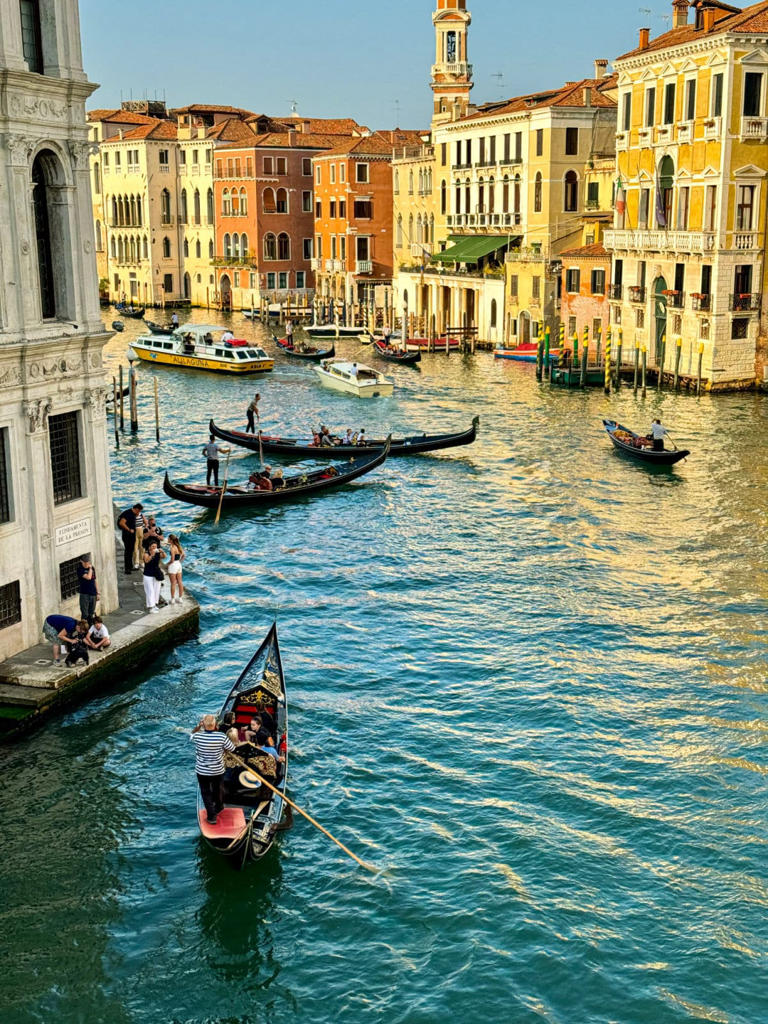
National Geographic content straight to your inbox—sign up for our popular newsletters here

How this year's Venice Biennale is bringing outsider art into the fold
The 60th edition of the Venice Biennale is launching in April, with a focus on marginalised groups, immigration and decolonisation.
“No matter where you find yourself, you’re always truly, and deep down inside, a foreigner,” says Adriano Pedrosa, artistic director of the São Paulo Museum of Art and curator of this year’s Venice Biennale — the show’s first from the Southern Hemisphere. Held every two years, the six-month festival champions the world’s greatest artistic talent through exhibitions and national pavilions. For its 60th edition, opening on 20 April this year, Pedrosa has chosen the title Stranieri Ovunque — ‘Foreigners Everywhere’ — and favoured artists that have had no or little involvement in the Biennale before.
Taking place in Venice’s Giardini parkland and Arsenale shipyard areas, the expo will be formed of two parts: the Nucleo Contemporaneo, focusing on marginalised groups such as Indigenous, queer and outsider artists, and the Nucleo Storico, which will showcase 20th-century works from Latin America, Africa, the Middle East and Asia, as well as the Italian artistic diaspora.

What to see at this year's Venice Biennale?
Exile is a Hard Job
Turkish feminist artist Nil Yalter, one of two winners of this year’s Golden Lion award for lifetime achievement, will present a new version of her ongoing project, Exile is a Hard Job, which started in 1975. The installation tackles the issue of social ostracisation afflicting those living in foreign lands, through the medium of photos and drawings. It will be the first time the octogenarian has ever shown work at the Biennale, and it’ll be displayed in the Central Pavilion at the Giardini.
Cosmic Garden
Indian artists Madhvi and Manu Parekh have collaborated with Mumbai’s Chanakya School of Craft, which focuses on empowering women, for this showcase at Venice’s Salone Verde. Paintings and sculptures inspired by Indian culture will be centred around expressionism, modernism and female deities, and will be presented along with reimaginings of the works as hand-embroidered pieces. Some 320 female artisans have been involved in handcrafting the works, which use organic materials such as silk.
Ka’a Pûera: we are walking birds
The Brazil Pavilion will be renamed the Hãhãwpuá Pavilion this year, for a takeover by Glicéria Tupinambá — an artist, activist and representative of the Tupinambá Indigenous community of Serra do Padeiro and Olivença, from Southern Bahia — along with two other Indigenous artists, Olinda Tupinambá and Ziel Karapotó. Hãhãwpuá is an Indigenous name for the lands that became Brazil, and the exhibition will confront the marginalisation of Brazil’s Indigenous communities since colonisation.
FREE BONUS ISSUE
Related topics.
- IMMIGRATION
- MODERN HISTORY
- SEXUAL ORIENTATION
You May Also Like

Why do colleges have legacy admissions? It started as a way to keep out Jews.
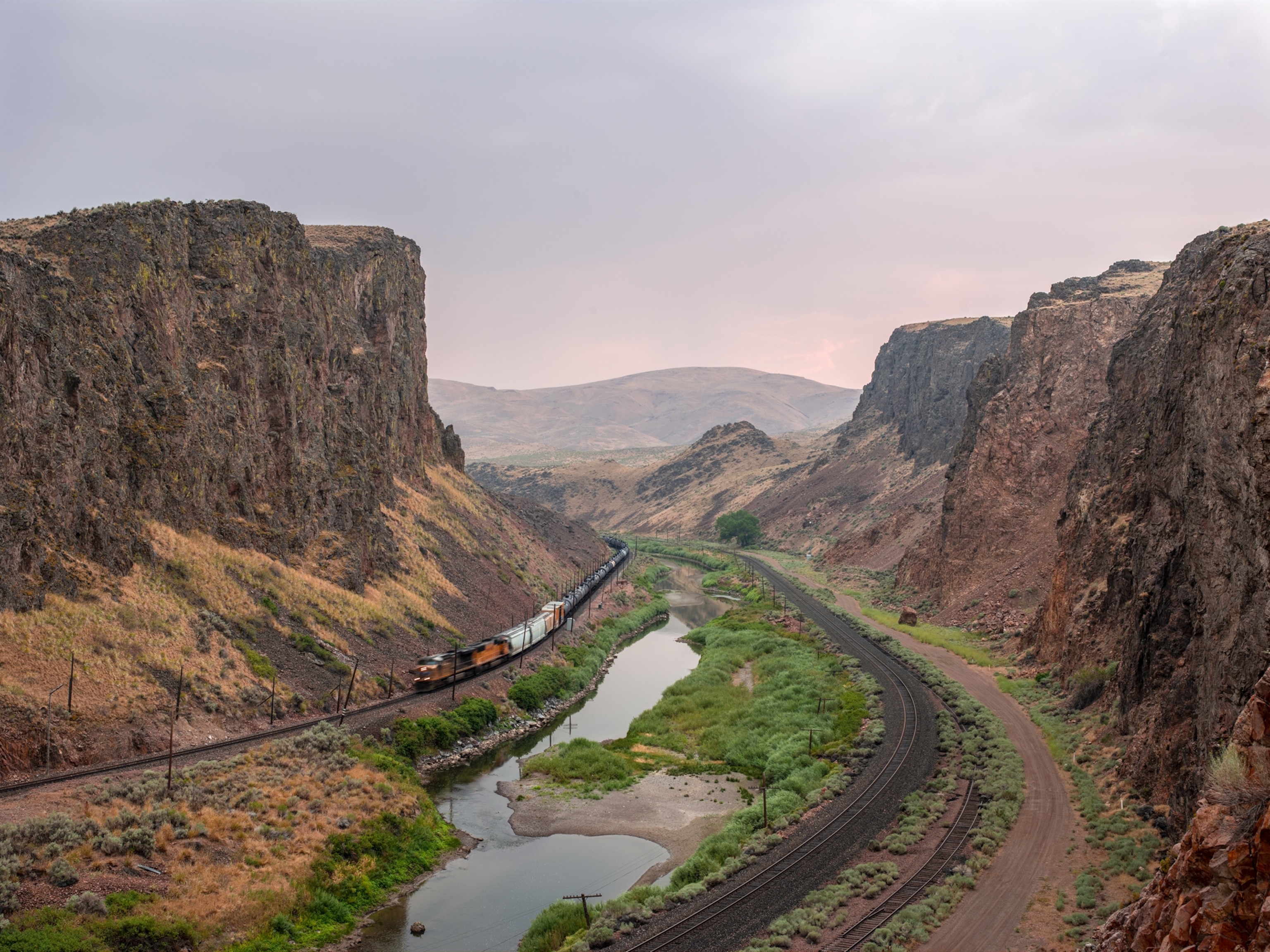
These Chinese immigrants opened the doors to the American West
How to plan a walking tour of the best museums in washington, dc.

Where to stay in Helsinki, Finland's design-conscious capital

What exactly is a Yankee?
- Perpetual Planet
- Environment
- History & Culture
- Paid Content
History & Culture
- Mind, Body, Wonder
- Terms of Use
- Privacy Policy
- Your US State Privacy Rights
- Children's Online Privacy Policy
- Interest-Based Ads
- About Nielsen Measurement
- Do Not Sell or Share My Personal Information
- Nat Geo Home
- Attend a Live Event
- Book a Trip
- Inspire Your Kids
- Shop Nat Geo
- Visit the D.C. Museum
- Learn About Our Impact
- Support Our Mission
- Advertise With Us
- Customer Service
- Renew Subscription
- Manage Your Subscription
- Work at Nat Geo
- Sign Up for Our Newsletters
- Contribute to Protect the Planet
Copyright © 1996-2015 National Geographic Society Copyright © 2015-2024 National Geographic Partners, LLC. All rights reserved
More From Forbes
How to plan the best solo female trip to milan, italy.
- Share to Facebook
- Share to Twitter
- Share to Linkedin
Milan is a wonderful destination for solo female travel in Italy.
Based on post-pandemic tourism data compiled by Italy’s tourist board , planning vacations to the the beloved Mediterranean country has never been more popular. While cities like Rome and Venice will always remain bucket list destinations, what should you do if you’re a solo female traveler looking for an Italian city that’s less crowded, safe, and just as beguiling?
Consider Milan. Italy's second-largest city has long been dismissed as the country’s design and fashion capital, but in reality, there’s far more to Milan’s appeal than Salone del Mobile and Miuccia Prada. From historic attractions to fantastic food, the city is an underrated gem. Plus, getting around is a breeze thanks to inexpensive public transportation, including Milano Centrale—which has several hundred domestic trains departing daily so you can see more of Italy.
Here, a handy guide on how to plan a safe and unforgettable solo female trip to Milan.
Where to Stay
Hotel NH Collection Milano CityLife pays homage to the church it occupies, 1934's Chiesa del Cristo ... [+] Re.
Anchored by three architectural masterpieces from Zaha Hadid Architects, Daniel Libeskind, and Arata Isozaki, CityLife is a mixed-use development that’s home to stylish shops, enticing restaurants, and as of 2022, one of Milan’s buzziest new hotels, Hotel NH Collection Milano CityLife . Spread across two structures including Chiesa del Cristo Re, a 1934 neoclassical-style church, the 185-key hotel offers a stay that’s removed enough from Milan’s city center to ensure peace and quiet, but close enough to access by foot.
One Of The Best TV Shows Ever Made Sets Sail On Netflix Today For The Very First Time
Netflix renews and also cancels the witcher as first glimpse of season 4 drops, bitcoin suddenly braced for a 35 trillion halving price earthquake.
Hotel NH Collection Milano CityLife's exterior lounge and reception area
The gleaming all-white structure’s original facade, arches, and soaring columns were carefully restored to nod to Chiesa del Cristo Re’s previous life. The design ethos flows indoors to the main lobby, where seven-meter-high bronze elements resembling organ pumps make the mundane act of checking in a grand one.
However, religion isn’t the only source of inspiration for Hotel NH Collection Milano CityLife. The city’s fashion legacy is woven into the property’s signature restaurant and lounge Tailors. Lovely for an aperitivo—which in true Italian style arrive with salty nibbles like Taralli and potato chips—a sophisticated dinner of housemade duck ragu paccheri drizzled with a Vacche Rosse Parmigiano Reggiano bechamel, or the daily breakfast spread, Tailors celebrates craftsmanship in the kitchen. When the weather warms up, zip up to the roof, where one of only two hotel rooftop pools in Milan and chic al fresco bar await.
NH Collection Milano Citylife has ten duplex suites outfitted with private terraces and hot tubs.
Though the guest rooms skew snug (as do many European hotels), they’re smartly laid out. On top of that: the low-slung beds are dreamy; the branded NH bathroom amenities incorporate sustainable packaging and formulas; and the ceiling-to-floor windows bathe the space in natural light for a more open feel. In the mood to splurge? Then reserve one of the hotel’s ten duplex suites . Cloaked in calming earth tones, they sport one-of-a-kind configurations and come with private terraces and hot tubs.
Federico Vaccari leads personalized tours of his hometown Milan in a beautiful restored vintage ... [+] Fiat 500.
If you’ve been to Milan before, and want to discover a lesser-known side of the city, book a private tour with Federico Vaccari . Over the course of three hours, Vaccari will scoot you around in a beautiful restored vintage Fiat 500 and reveal spots travelers rarely get to see, like Via Abramo Lincoln’s candy-colored houses. Since the car can only hold two passengers, it’s especially well-suited for solo female travelers.
For first-timers: no visit would be complete without seeing the Duomo, Milan's most famous cathedral, and enjoying expansive city views from the rooftop. Teatro alla Scala and Santa Maria delle Grazie, home of Leonardo Da Vinci's famous Last Supper painting, are other cultural landmarks worth scoping out. For retail therapy, head to Milan’s legendary fashion district Milan's Quadrilatero and Via della Spiga. Reserved for pedestrians, this glamorous strip showcases Italy’s biggest fashion houses such as Prada and Moschino. (Bring your passport to enjoy tax-free shopping.)
Where to Eat
Panzerotti is one of Milan's most popular snacks.
Despite being frequently overshadowed by Naples, Rome, and Bologna, Milan is a worthy dining destination in its own right. As of 2023, it’s home to 17 Michelin-starred restaurants like Rome, which run the gamut from Enrico Bartolini ’s innovating tasting menus to IYO , where modern Japanese fare with European flourishes take center stage.
Bice remains a city stalwart for classic Tuscan fare (Ossobuco alla Milanese, Ribollita) and Federico Delrosso’s timeless design, while Peck has attracted discriminating palates since 1883 with an extensive (and immaculately presented) selection of gourmet meats, prepared foods, cheese, sweets, and wines. Ciacco turns out high-quality, small-batch gelato in classic and experimental flavors like the Robiola-infused “Almost Cheesecake.” For a quick bite to go, Panzo has you covered with made-to-order panzerotti, a traditional Puglian snack of fried dough stuffed with melty cheese and tomatoes.

- Editorial Standards
- Reprints & Permissions
- Share full article
Advertisement
Supported by
Dissent, Diplomacy and Drama at the Venice Biennale
A look at pivotal years at the art festival, including when Mussolini brought Hitler to the show.

By Nina Siegal
Reporting from Amsterdam
The Venice Biennale, now in its 60th edition, is officially the longest-running international art exhibition in the world, spanning 129 years. It came into being in 1895, long before the internet and decades before commercial airplane travel. The year it opened coincided with the first projected celluloid film.
In all that time, the Biennale has weathered seismic social shifts: the rise and fall of European fascism, the beginning and end of the Cold War, and countless other conflicts, as well as the advent of Futurism, Abstract Expressionism and Pop Art.
During those moments of change, the Venice Biennale itself became a world stage for political upheaval. Here are some of its defining moments:
After two years of planning by Mayor Riccardo Selvatico of Venice, the city celebrated the silver wedding anniversary of King Umberto and Queen Margherita with the 1st International Art Exhibition of the City of Venice, opened on April 30, 1895. It made use of the city’s public garden, the Giardini di Castello, created by Napoleon. Conceived as a showcase of new and recent international artists, it attracted more than 200,000 visitors, according to the Venice Biennale archives.
Until 1907, a single central pavilion displayed art from various European countries. Belgium built the first independent national pavilion, to showcase its country’s work. After that, the British, Hungarian and Bavarian Pavilion, for Germany, were built in 1909; the French and Dutch in 1912; and the Russian in 1914. Other pavilions would come later.
Filippo Tommaso Marinetti, author of the 1909 Futurist Manifesto, and a group of like-minded artists, dropped manifestoes from the top of the Campanile into the Piazza San Marco. The leaflet denounced the city’s old ways, proposed burning all the gondolas and destroying the crumbling palaces. This was the artists’ way of calling for an embrace of modernity and a radical avant-garde.
The action took place just before the exhibition of Futurist artworks in the Biennale, explained Debora Rossi, head of the organization’s archives, and was designed to generate publicity for a show by Umberto Boccioni. “Part of the idea of the movement was to provoke,” she said. “It was a performance.” Seen that way, it was the first work of political performance art ever to show at the Biennale.
While Benito Mussolini served as Italy’s prime minister, the Venice Biennale became a “political tool for the fascist government” and “a propaganda instrument,” said Cecilia Alemani, artistic director of the 59th Venice Biennale and a co-curator of a 2020 exhibition of the event’s history.
Alemani explained that, under orders from the fascist government, the exhibition halls were filled with approved classical art and, finally, in 1942, with art explicitly “about military might.” About a year after becoming German chancellor, Hitler met Mussolini for the first time in June 1934, before visiting the 1934 Venice Biennale. They traveled together to the Giardini on the Grand Canal by boat, cheered by crowds on the bridges and banks. Hitler was photographed with other Italian leaders in the hall of the German Pavilion.
After the Art Biennale was canceled from 1943 on because of the war, the first major postwar exhibition emphasized freedom of expression for artists. Pablo Picasso showed his work at the Biennale for the first time. The American art collector Peggy Guggenheim was invited to use the Greek pavilion (closed while the country was in a civil war) to show her collection of Cubism, Futurism, abstraction and Surrealism — forms of art that had been labeled “degenerate” by the Nazis, discarded or burned, while artists were persecuted.
Guggenheim also debuted a new form of art coming from the New York scene, including Robert Motherwell, Alexander Calder and early Jackson Pollock. “It was the beginning of the shift of the needle toward America,” Alemani said.
Before 1964, the American pavilion was not run by the U.S. government, but by an artist cooperative, and then by New York’s Museum of Modern Art. At the height of the Cold War, State Department officials began to regard the Biennale in a new way, and the United States Information Agency, a government diplomatic agency, took control. Amei Wallach, the director of “Taking Venice,” a new documentary film about that 32nd Biennale, explained that officials saw the event as a potential platform on which to wage a “cultural Cold War” with the Soviet Union.
A delegation of American Pop artists, including Roy Lichtenstein, Jasper Johns and Robert Rauschenberg, took the Biennale by storm, with the support of a team led by the Washington insider Alice Denney, the curator Alan Solomon and the art dealer Leo Castelli. Finding the American pavilion too small for its show, the team converted the disused U.S. Consulate in Venice into a gallery.
Rauschenberg won the grand prize for painting for his “combines” incorporating silk-screens featuring symbols of 1960s Americana — the first time an American had ever taken the prize. For many, it signaled not only the triumph of Pop Art, but also an idea that the center of the art world had shifted from Paris to New York, Wallach said.
As student protests spread across Europe, the Biennale became a symbol of political and cultural struggle. Young Italians poured into Venice, marching in the streets and storming the gates of the Giardini. Opening day ended with a police crackdown against a demonstration on Piazza San Marco. Carrying signs that read, “The Biennale is Dead,” the protesters managed to occupy some national pavilions and turn the art to face the wall. Some artists withdrew their works to support the protests. The clash forced institutional reforms, including a 1973 revision of the Biennale’s underlying statutes, which had remained unchanged since Mussolini’s reign, Rossi said.
The new president of the Biennale, Carlo Ripa di Meana, a socialist, opened the so-called “New Biennale,” designed to emphasize democratic politics and social change. In 1974, he kept the pavilions shuttered and devoted the show’s platform in public spaces to a single “antifascist” exhibition in response to the military coup by Augusto Pinochet in Chile. Entitled “Libertà al Cile” (“Freedom for Chile”), it included concerts, theatrical performances and street murals painted on-site. Ripa di Meana wrote that it was “an act of dutiful solidarity and democratic faith” with the Chilean people.
The “Biennale of Dissent” highlighted artists from the Soviet Union and other Communist bloc countries, such as Czechoslovakia, showcasing Soviet art, theater and film made by dissidents at home and abroad.
The art exhibition, “New Art From the Soviet Union. an Unofficial Perspective,” featured some 300 works by 70 Soviet artists who were not sanctioned by the state, angering Soviet authorities, which pulled out of the Biennale for a few years.
After the Cold War ended, the Biennale reflected a changed world. The German conceptual artist Hans Haacke created the installation piece “Failed Hope” by smashing the stone floor of his country’s pavilion, where Hitler had once stood, and leaving it in fragments. Alexander Alberro, a professor of art history at Barnard College and Columbia University, explained that the installation was one of several works that year that “dealt with the new world order in a number of ways. You could call it the first Biennale in a truly global context.”
In the midst of wars in Yugoslavia, the Serbian artist Marina Abramovic presented “Balkan Baroque,” an installation in which she sat in a pile of animal bones in a white dress, crying and singing Balkan folk songs while trying to scrub the bones clean, as blood stained her dress. Since it was summer in Venice, the piece had a powerful stench, leaving a lasting impression on visitors.
The Covid-19 pandemic postponed the 2020 Architectural Biennale for a year. While all national pavilions in the Giardini were closed in 2020, the central pavilion was devoted to one exhibition: “Le muses inquiete (The Disquieted Muses). When La Biennale di Venezia Meets History,” co-curated by Alemani, which used archival documents and art.
The 2021 edition of the Art Biennale was also postponed and took place in 2022. Alemani, its first Italian woman artistic director, curated the exhibition “The Milk of Dreams.” More than 80 percent of the works were by women and nonbinary artists. That event also marked another kind of opening up. Cameroon, Namibia, Nepal, Oman and Uganda participated for the first time.
Because of the war in Ukraine, the Russian pavilion remains empty this year for a second time, while the Ukrainian pavilion is devoted to a collaborative artwork called “Net Making.”
In response to the Israel-Hamas war, an activist organization collected more than 23,000 signatures on a petition to ban Israel from this year’s edition. In a statement in February, Italy’s culture minister, Gennaro Sangiuliano, called the petition shameful and confirmed Israel’s participation in the event. On Tuesday, however, when the pavilions opened for a media preview, Israel’s remained locked. The artist and curators representing Israel said they would not open the show until “a cease-fire and hostage release agreement is reached.”
Copy My Trip: A grand rail tour of Italy from Rome to Venice

Apr 19, 2024 • 7 min read

Rolling through the Italian countryside on a restored 1960s train? A once-in-a-lifetime experience © Sina Hotels
Lonely Planet associate editor Ann Douglas Lott recently traveled through Italy aboard a vintage train, regional trains and bus. Here, she shares some tips and insights for anyone planning a similar trip.
When I told people I had a trip planned to Italy , the joy with which they talked about their own travels there was endless – the dreamy landscapes, the fascinating ruins, the life-changing slice of pizza they had, how their daily cup of coffee just hasn't compared since – but I knew I wouldn't truly understand that joy until I experienced it for myself.
Yes, I was recently a first-timer in one of the planet's most-visited destinations, so my expectations were exceedingly lofty. The plan was a grand rail (and occasional bus) tour stopping in Rome , Perugia , Florence and Venice – all in just one week. Initially, the pressure to cram in as much as I could that week was at the front of my mind, but thanks to the Italian art of slow living, I learned to appreciate pacing myself as I journeyed (and ate) my way through this incredible country.
Also a first-timer in Italy? Here's what you should know
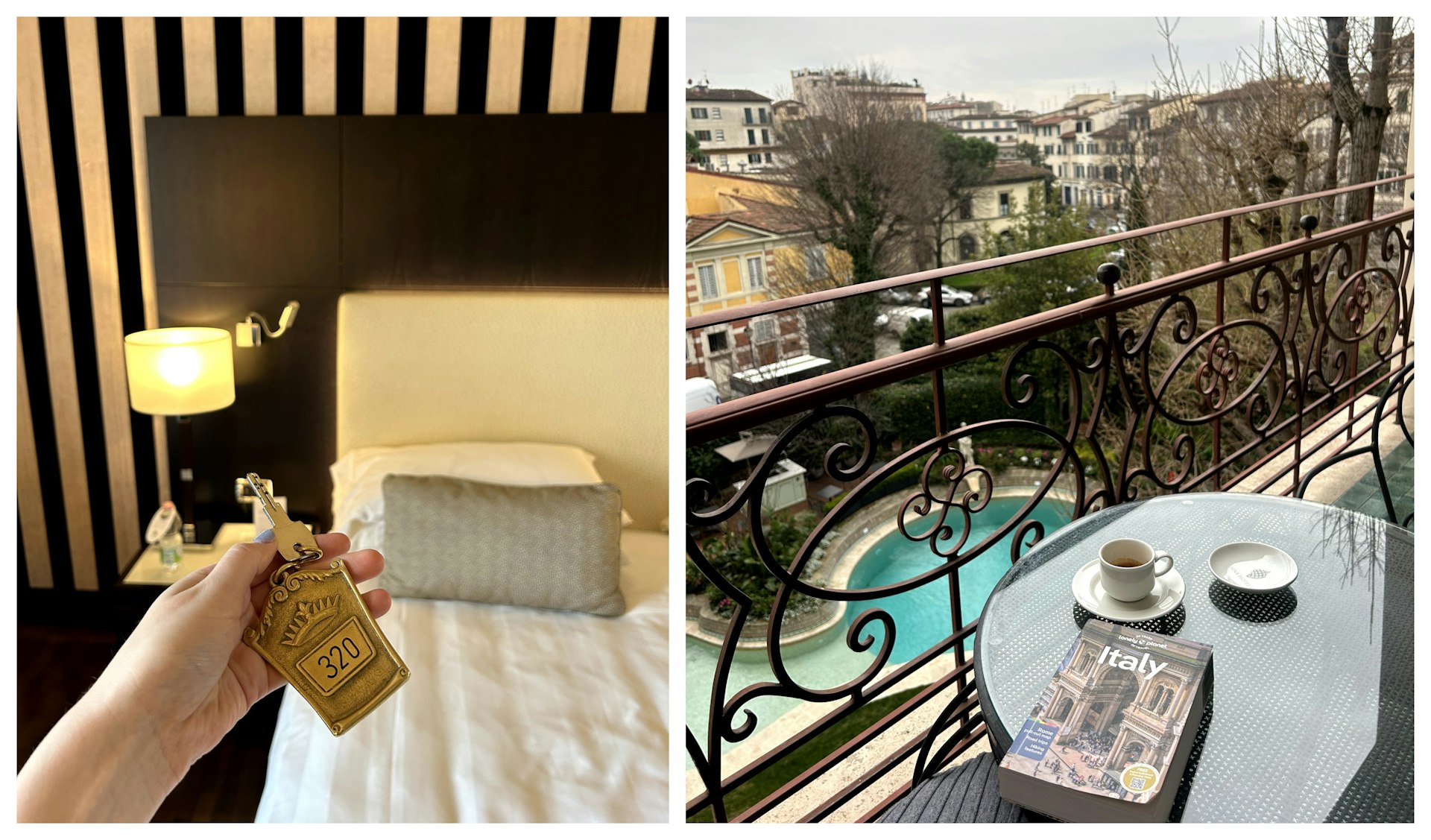
Where did you stay? What was the vibe?
Four fabulous destinations meant four fabulous, centrally-located hotels to match. I was invited to stay at a different five-star Sina hotel in each city: the 150-year-old Bernini Bristol in Rome, the hilltop Sina Brufani in Perugia, the classy Villa Medici in Florence and the canal-side Centurion Palace in Venice.
The brand has been owned and operated by the same family for over 60 years, so that classic Italian charm is undeniable. I also just adore a hotel that feels like the destination it's in, so details like the Brufani's elegant, classical decor and the Villa Medici's grand, early 19th-century lobby enhanced the whole experience. While considered luxury hotels, don't dismiss these if you like to stick to a tighter travel budget ; nightly rates at these properties cover a broad spectrum, typically depending on the popularity of the destination. Perugia, for example, would suit a budget traveler more than Florence (Perugia was my favorite stop – more on that later).

Some highlights:
- Sipping Aperol spritzes on the hotel's panoramic rooftop at sunset in Rome
- The Perugia hotel's pool with a glass bottom that peers into an ancient ruin, plus the view of Umbria's rolling hills from my room
- The vintage keys and private garden with its own pool at the Florence hotel
- Enjoying views of the Grand Canal from the Venice property's front porch

Favorite activity from the trip?
Let's talk about the ultimate train ride. It's always a good idea to roll through the Italian countryside, but on a beautifully restored 1960s masterpiece? That's a once-in-a-lifetime experience. The Arlecchino is the stuff of Wes Anderson films, with its roomy, brightly colored velvet seats, massive windows, vintage bar car and a chic, retro viewing cabin at either end of the train. Departing from Rome, we crawled through Lazio and into the Umbrian countryside, between green hills, through mountain tunnels and past lovely medieval towns like Assisi .
I count myself lucky to have scored a seat on this journey to Perugia – the Arlecchino doesn't run daily like the Trenitalia lines. But the operator of this line, Fondazione FS Italiene , runs similar journeys throughout the country almost daily, so you can still experience the magic of riding on a vintage Italian train. Tickets can be booked on the website , where you can also learn about each of their historic lines. Prices vary depending on the journey, but most hover around €50 per adult. If you prefer a speedier ride and choose to go the Trenitalia route, staggering views are guaranteed no matter which service you board.
Plan your own rail adventure through Italy with our tips for getting around

Best thing you ate?
The aforementioned life-changing slice of pizza? It was a mozzarella and guanciale slice from Zizzi Pizza in Rome. But the best thing I ate was a ridiculously fresh sandwich from I' Bacaro De Bischeri in Venice: warm focaccia, prosciutto, arugula, caramelized onions and burrata.
Honorable mention: the amaretto mousse and tiramisu from Osteria Al Bacareto in Venice, ham and parmesan fettuccine from Harry's Bar The Garden in Florence (conveniently located inside the Villa Medici hotel) and a simple bite of burrata – so fresh it was still warm – in Perugia. Oh, and the whole gelato spread at Gelateria Nico in Venice, though I'm partial to stracciatella (chocolate chip).
Want more Italian restaurant recs? Here's where you should eat in Florence right now

What was the most touristy thing you did?
When in Venice, book a glass factory tour! Our hotel arranged for a water taxi to deliver us to Murano for a factory and gallery tour of Schiavon Art Team's headquarters, one of the island's many glassblowers. The taxi ride across the lagoon was a glamorous experience in itself – a private, classy wooden boat with leather seats – but you can also take a vaporetto to Murano for a fraction of the cost.
We entered a vast gallery of vibrant glass chandeliers, plants, abstract faces and even a mural of the Avengers (they can do it all). But the highlight was observing the glass masters at work – a team of five almost dancing to keep the glass hot while also perfecting the movements and timing of sculpting the given subject, in this case, a beautiful blue marlin. I could've sat there all day, but the canals were calling.

What was the most under-the-radar activity you enjoyed?
If you need a place to stop between Rome and Florence, this is it. Umbria is everything you love about Italy without the crowds (except during Perugia's annual chocolate and jazz festivals in March and July, respectively), and the one night I spent in Perugia's medieval center wasn't nearly long enough.
While there was still daylight, I toured the underground fortress Rocca Paolina . You can enter the fortress via escalator from a small park called Giardini Carducci , which happens to be a fabulous spot to watch the sunset over the rolling hills of Umbria's countryside. The next morning, head to Sandri for a coffee and pastry – this is Perugia's most famous cafe. It's been a family-run business since 1860, and multiple locals told me it sells the best pastries around.

Did you bring home a souvenir?
Oh, did I shop. Here's the haul: in Florence, I snagged a pair of red and pink velvet Mary Janes at Bramada . It was a love-at-first-sight-through-the-window kind of moment. The rest of my shopping was in Venice: a marble-covered notebook of watercolor paper from Il Papiro (and regular notebooks for my family), a Murano glass charm necklace from The M Venezia (just €20–25 each) and a vintage red scarf with illustrations of Capri from Vintageria for just €5 – perhaps a sign that Capri should be my next Italian destination?
Pick up more souvenirs at these local shops in Rome and Florence

Best tip for someone who wants to plan the same trip?
The timing of this trip was simply marvelous: March shoulder season, specifically the week before Easter. The weather was decently warm as highs hovered around 15°C (60°F), the sun was mostly shining, and the Easter crowds hadn't yet made their way to the more popular cities. I packed a short, thin coat for the cooler nights and occasional wind.
Also, when you book a regional train ticket (aka, not the stylish Arlecchino), you have to validate it before you board your train. Otherwise, you'll face a hefty fine when ticket inspectors come to scan your ticket on board. Look for one of the green machines at the head of the platform, and insert your ticket to get it stamped. This isn't required on high-speed trains, though – those tickets are valid for a specific train service and seat.
Ann Douglas traveled to Italy on the invitation of Sina Hotels. Lonely Planet does not accept freebies in exchange for positive coverage.
Save our complete guide to Italy:
Add these top experiences to your itinerary Know these things about Italy before you go Start crafting your budget with these tips Learn the best times to avoid the crowds
Explore related stories
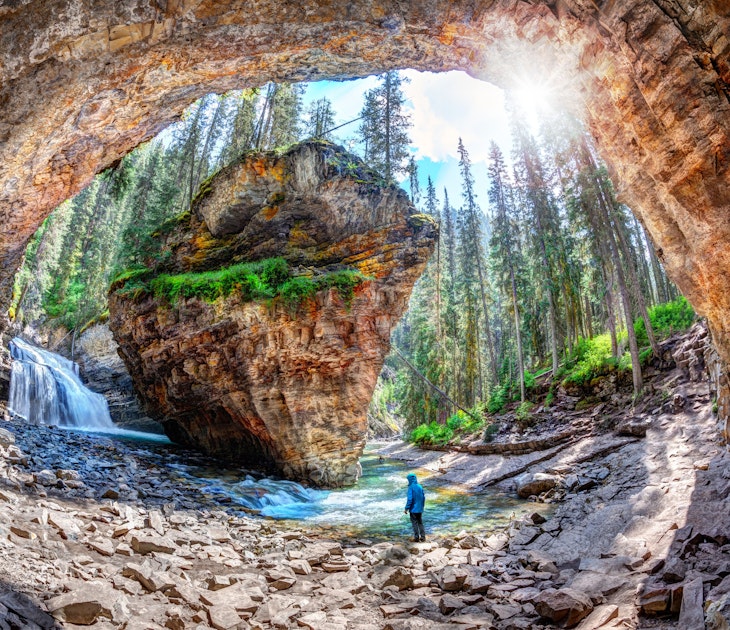
Apr 19, 2024 • 10 min read
Summer is just around the corner in the northern hemisphere. Here's where the Lonely Planet team is going.
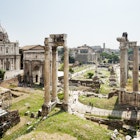
Apr 19, 2024 • 4 min read

Apr 17, 2024 • 6 min read

Apr 9, 2024 • 7 min read
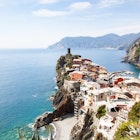
Apr 8, 2024 • 13 min read

Apr 8, 2024 • 7 min read
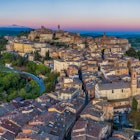
Apr 7, 2024 • 11 min read

Apr 5, 2024 • 5 min read
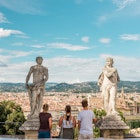
Apr 5, 2024 • 10 min read
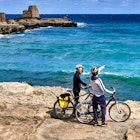
Mar 30, 2024 • 4 min read

IMAGES
VIDEO
COMMENTS
Venice in May. Along with April, May is one of the best months weatherwise to visit Venice. Temperatures of around 21°C (70°F) are perfect for wandering about the city before the summer heat kicks in. This is also a good time to explore some other islands and cities in Veneto before they're completely overwhelmed.
Worst Time to Visit Venice. Venice, Italy - May 29 2023: Crowds of tourists strolling on the cobblestone alley near Grand Canal in Venice/Cristi Croitoru/Shutterstock. The worst time to visit Venice is during the summer when the heat and the crowds combine to make the city unbearable. When you look at the temperature, summers in Venice don ...
From festivals like Carnevale to the quieter winter months, we pick through the best times to visit Venice. ... Copy My Trip: A grand rail tour of Italy from Rome to Venice. Apr 19, 2024 • 7 min read. Destination Practicalities. 11 things to know before traveling to Chiang Mai, Thailand. Apr 19, 2024 • 7 min read.
Best Times To Visit Venice. The best time to visit Venice is from September to November when tourists desert the city. Although the temperatures - which range from the upper 30s to mid-70s ...
By Rick Steves and Gene Openshaw. Venice's best travel months (also its busiest and most expensive) are April, May, June, September, and October. Summer in Venice is more temperate (high 70s and 80s) than in Italy's scorching inland cities. Most Venetian hotels come with air-conditioning — important in the summer — but it's usually ...
The shoulder season in Venice occurs in the spring (April to June) and fall (September and October). These periods offer a balance between the bustling energy of the peak season and the tranquility of the off season. The weather is generally pleasant, and while there are still tourists, the crowds are less overwhelming.
The fall is a lovely time to visit Venice, but it is also when the acqua alta (flooding, or literally "high water") is more likely to occur. October through January is the typical high water season, though flooding can occur at any time during the year. Venice's location, in northern Italy on the Adriatic Sea, means that the city has colder ...
6. Don't drive to Venice. You know, of course, that there are no cars in Venice. But there is a popular parking lot at Piazzale Roma, the road terminus for the city, located on the outskirts of Santa Croce. Don't bother trying to get there - it'll likely be full, and at peak times you could spend upwards of an hour navigating the one-way system to turn back.
Venice and beyond. Beyond Venice. San Polo & Santa Croce. Murano, Burano & the Northern Islands. Giudecca, Lido & the Southern Islands. Venice's best sights and local secrets from travel experts you can trust.
Venice, Italy Travel Resources. The following list is a curated trove of travel resources. Some of these are old comrades of mine, trusty partners in the many escapades and misadventures on the road. Others come with the seal of approval from those wanderers I've crossed paths with — friends, fellow nomads, the kindred spirits who've shared ...
9:00 Meander from St. Mark's Square to the Rialto Bridge, ideally off the main thoroughfares, and — even better — following our Venice guidebooks ' self-guided "St. Mark's to Rialto Loop Walk" as far as the Rialto Bridge. 10:00 Enjoy the action at the Rialto Bridge and Rialto Market. 11:00 Make your way to the Frari Church via the San Polo ...
2. For more information on all of the wonderful things to do in Venice, read Venice, Italy: Must See And Do In This Magical City. 3. To learn about the reason Venice may not exist in the future, head to Why Future Generations May Not See Venice. Venice Travel Guides. Here is a list of some of the best travel guides for Venice: 1.
Holly Johnson|Alissa Grisler November 10, 2023. Ranking of the top 20 things to do in Venice. Travelers favorites include #1 St. Mark's Basilica (Basilica di San Marco), #2 Grand Canal and more.
Visit Venezia Official is the city guide of Venezia. Find out the best things to do in Venezia, where to sleep and the best places to eat in Venezia. Visit Venezia will help you plan your trip to Venezia giving you useful information and advice on how to visit Venezia in the best possible way.
Unfortunately, Instagram "influencers" yelling at you to get out of their shot is more likely…. 3. The Bridge Of Sighs. The Famous Bridge of Sighs. The Bridge Of Sighs is a unique enclosed bridge of white limestone spanning the Rio di Palazzo in Venice. There's an interesting story behind the name.
1.1Avoiding the crowds: 1.2What kind of weather to expect: 1.3Events to attend: 2Venice Tip #2 - Best places where to stay in Venice. 3Venice Tip #3 - Don't fear to get lost, explore. 4Venice Tip #4 - Get on a boat to see Venice Italy from the water! 5Venice Tip #5 - Eat authentic local food in Venice Italy.
Ideally, you should plan to spend at least 3 to 4 days in Venice to allow you to see the main attractions, as well as visit some islands and even, go on a day trip. Venice is one of the most popular tourist destinations in the world - and rightly so! The historic Italian city is truly one-of-a-kind. The picturesque canals of Venice, winding ...
1. Take in the Piazza San Marco. For many people, this waterfront square is Venice: the rolling domes of the basilica, the centuries-old cafes beneath the stately porticoes, the vast Campanile (belltower) throwing its shadow around the square, high tide occasionally sloshing around your feet. There's so much to see around Piazza San Marco (or St Mark's Square) that you could easily spend a ...
Bring an External Charger for Your Phone. You'll be walking a lot in Venice, and using your phone quite a bit - especially your map app and your camera. If your hotel is in the center, you can pop in to rest your legs and charge your phone. Otherwise, bring an external phone charger.
Campanile di San Marco. Originally built as a lighthouse to assist navigation in the lagoon, visitors can be whisked by elevator to the top of St. Mark's Campanile or bell tower to savor incredible views of Venice, the lagoon and the Alps in the distance. 6. Ponte di Rialto.
A tourist takes a selfie in St. Mark's Square in Venice, Italy, in 2016. Starting in January, the city will require day-trippers to make reservations and pay a fee to visit.
Take a Tour of the 500-Year-Old St. Mark'sBell Tower. Go up to the Bell Tower of Basilica San Marco for one of the best views of the whole city. You will need a ticket and it's best to get it ...
What to see at this years Venice Biennale? Exile is a Hard Job. Turkish feminist artist Nil Yalter, one of two winners of this year's Golden Lion award for lifetime achievement, will present a ...
With 75 works, "Willem de Kooning and Italy" marks the largest de Kooning show to date in Italy, delving into the artist's relationship with Italy and the influential experiences he had in the country from 1959 to 1969. The show highlights how the Dutch American Abstract Expressionist was shaped by his time in Italy, especially in Rome, and the direct impact it had on his work.
What to see at the 2024 Venice Biennale. Link Copied! The theme for the art festival is "Foreigners, Everywhere." This week sees the opening of the Venice Biennale, an 8-month-long festival of art ...
Milan is a wonderful destination for solo female travel in Italy. getty. Based on post-pandemic tourism data compiled by Italy's tourist board, planning vacations to the the beloved ...
Crowds to see King Umberto and Queen Margherita of Italy at the 1st International Art Exhibition of the City of Venice in 1895. It attracted more than 200,000 visitors. Credit...
Prices vary depending on the journey, but most hover around €50 per adult. If you prefer a speedier ride and choose to go the Trenitalia route, staggering views are guaranteed no matter which service you board. Plan your own rail adventure through Italy with our tips for getting around. Top left: A whole pie (or five) from Zizzi Pizza in Rome ...